Fall/Winter 2025


Fall/Winter 2025

Heats Up: Fall & Winter 1775 page 4
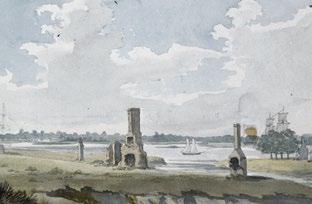

Collection Spotlight: Virginia’s Constitutional Ratification Document page 10
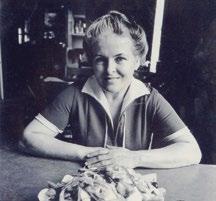

Reclaiming the Story of Abraham Skipwith page 18
Stella Dikos: Building Community page 14 HampdenSydney College at 250 page 22

Cover: Union Theological Seminary, Venable Hall, c. 1830s (Courtesy of Hampden-Sydney College).
Virginia History & Culture
No. 24
Questions/Comments newsletter@VirginiaHistory.org
428 N Arthur Ashe Boulevard Richmond, Virginia 23220 VirginiaHistory.org
804.340.1800
Galleries and Museum Store
Open 10 am – 5 pm daily
Research Library
Open 10 am − 5pm,
Monday – Friday 2nd & 4th Saturdays
NEWSLETTER TEAM
Editor
Graham Dozier
Designer/Production
Cierra Brown
Contributors
Jamie Bosket, Danni Flakes, Sam Florer, Julie Kemper, Sesha Moon, Corey Piper, Tracy Schneider, Tommy Shomo, Andrew Talkov
EXECUTIVE TEAM
President & CEO
Jamie O. Bosket
VP for People & Culture
Paula C. Davis
VP for Operations & CFO
David R. Kunnen
VP for Education & Engagement
Michael B. Plumb
VP for Advancement
Anna E. Powers
VP for Collections, Exhibitions & Research
Adam E. Scher
VP for Marketing & Communications
Tracy D. Schneider
THE VIRGINIA MUSEUM OF HISTORY & CULTURE
VIRGINIA HISTORICAL SOCIETY BOARD OF TRUSTEES
Chair
Carlos M. Brown*
Vice Chair
J. Tracy Walker IV*
Immediate Past Chair
Richard Cullen*
Honorary Vice Chairs
Austin Brockenbrough III
Harry F. Byrd III*
Nancy H. Gottwald
Conrad M. Hall*
Thomas G. Slater, Jr.*
Regional Vice Chairs
William H. Fralin, Jr.
Susan S. Goode*
Gen. John P. Jumper*
Lisa R. Moore
Gerald F. Smith*
B. Marc Allen
Neil Amin
Charles L. Cabell
Victor O. Cardwell
Herbert A. Claiborne III
William C. Davis
Melanie Trent De Schutter
Molly G. Hardie
Victoria D. Harker
Russell B. Harper
Rudene M. Haynes
Paul C. Harris
C. N. Jenkins, Jr.
Edward A. Mullen
Gen. Richard B. Myers
John R. Nelson, Jr.*
William S. Peebles IV
*Executive Committee Annual Report & Honor Roll page 28
J. Sargeant Reynolds, Jr.
Xavier R. Richardson
Pamela Kiecker Royall*
Elizabeth A. Seegar
Robert D. Taylor
Alexander Y. Thomas
Founded in 1831 as the Virginia Historical Society, the VMHC, a private, non-profit organization, is the oldest museum and cultural organization in Virginia, and one of the oldest and most distinguished history organizations in the United States. The museum cares for a renowned collection of more than nine million items representing the far-reaching story of Virginia.
We are building toward America’s semiquincentennial—quite literally, in this case!
As part of VMHC’s far-reaching portfolio of commemorative investments for America’s upcoming milestone moment—one of the most robust such efforts in the nation— we are seizing the opportunity to renew our beloved Robins Family Forum and Carole & Marcus Weinstein Learning Center. These two marquee spaces are the only areas of our 250,000-square-foot complex that weren’t refurbished as part of our 2020–2022 major overhaul. Now is our chance!
With our usual alacrity and nimbleness, we have just completed the renovation of the Robins Family Forum—transforming our nearly 500-seat auditorium into a beautiful convening space with expanded functionality to be an active hub for civic engagement and museum programs alike. Just in time for America’s anniversary, and the Forum’s own 20th anniversary, this thoughtfully renovated space will feature an enlarged stage, new lighting and technology, improved accessibility, and stunning new finishes that match the rest of the museum. Thanks to the Robins family, this wonderful venue has hosted some of VMHC’s most important activities for two decades. Now, with their continued, extraordinary support, the Forum is ready to continue its essential service to Virginians for decades more.
Next, we turn our attention to the renewal of the Carole & Marcus Weinstein Learning Center, which will become a stunning new educational hub—home for our popular history education initiatives and for our timely and dramatically expanding statewide civics education work. When complete in spring 2026, this wing of the museum will feature two wellappointed, multipurpose classrooms, a student gathering place, workspace for VMHC’s talented educators, and much more. As with the Forum renovation, the Learning Center will gain lighting, technology, and accessibility enhancements, and its finishes and aesthetics will reflect the new VMHC.

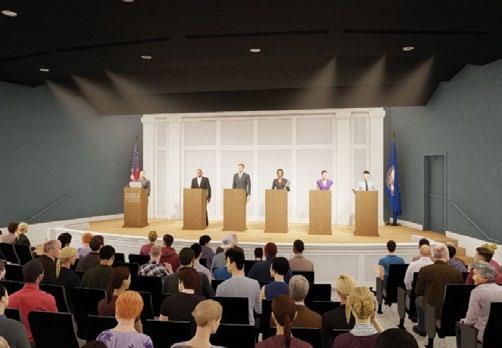
This is an exciting year on many fronts. Your state history museum is implementing ambitious plans for commemorating America’s 250th, and we are working to ensure that the legacy of this moment continues well past July 4, 2026. We are, as ever, moving with purpose and vigor to do more and be better every day for current and future Virginians. Thank you for all your wonderful support and your enthusiasm for our continued progress.
With gratitude,
Jamie O. Bosket, President & CEO


As night fell on January 1, 1776, torch-bearing men filled the streets of Norfolk. But these were not New Years revelers. Nor were they British soldiers, bent on punishing rebellious colonists. Instead, Patriot soldiers, many of them drunk, broke into homes, stores, and warehouses, looting the contents before setting the buildings on fire. When the smoke cleared two days later, two-thirds of Virginia’s largest city, almost 1,000 structures, lay in smoldering ruins. If Virginians had any doubts about the destruction and sacrifices that might accompany a revolution, they were extinguished by the burning of Norfolk.
After blooming in the spring and taking root that summer, Virginia’s revolutionary movement tested its strength in the fall and winter of 1775 with the first armed clashes between Patriot and British forces. Though the size of armies and number of casualties were not nearly as high as the battles taking place in the northern colonies, they had an outsized influence on the trajectory of the broader American Revolution. These events caused more and more colonists to see formal separation from the British Empire as the only way forward and when Thomas Jefferson penned the Declaration of Independence the following summer, two of the twenty-seven “injuries and usurpations” he charged against the king referenced events that took place in Virginia in the fall and winter of 1775.
Created that summer by the Third Virginia Convention, by October 1775, Virginia’s revolutionary army converged on Williamsburg. The core of this army were the nearly 1,000 professional soldiers of the First and Second Virginia Regiments. These men enlisted for at least one year of service and were paid, equipped, and trained by Virginia’s civilian revolutionary government. Bolstering the regular army was a larger body of 8,000 minutemen. Training more often than the militia, but not permanently under arms, the minutemen were designed as a semi-professional reserve force. The convention elected Patrick Henry as colonel of the First Regiment, making him de facto commander of all Virginia forces. But as with most things involving Henry, his selection was controversial. Many moderate delegates distrusted the bombastic and iconoclastic Hanover County lawyer, plus, he had no military experience. Even George Washington later wrote, “my countrymen made a capital mistake, when they took Henry out of the senate to place him in the field.” But the animosity that moderate elites felt toward Henry was exactly what made him popular with Virginia’s middle and lower classes. Recognizing the need to appease the wider population who would be necessary to fill the ranks of their new army, the convention relented. However, they balanced Henry by selecting William Woodford as the colonel of the Second Regiment. Woodford, a close friend and neighbor of Committee of Safety president Edmund Pendleton, had experience serving with Washington during the
French and Indian War and ensured the moderate faction had an experienced representative on the chain of command. Meanwhile, after fleeing the Governor’s Palace back in June, Royal Governor Lord Dunmore gathered his own forces in Norfolk. From there, he aimed to interdict supplies destined for the Patriot movement and awaited reinforcements he would use to retake Williamsburg by force.
Emboldened by a lack of organized resistance in the Norfolk region, Dunmore launched a series of raids into the surrounding countryside, seizing or destroying more than 70 cannons, countless muskets, and hundreds of pounds of gunpowder. Even more concerning in the eyes of Patriot leadership, Dunmore gave refuge to dozens, if not hundreds, of enslaved people who had escaped from across the colony and made their way to his ships. And although he had not yet enacted any formal policy, he repeatedly refused enslavers' demands to return escapees. Virginia’s Patriot executive body, the Committee of Safety, quickly realized these actions threatened the fundamental fabric of
Virginia’s slave society and they could not allow Dunmore to operate unchecked any longer. Even the Continental Congress in Philadelphia discussed Virginia’s need to “secure themselves from the practices of Lord Dunmore” as he remained one of the last royal governors across the colonies posing a threat to the cause. At the end of October, the committee ordered Colonel Woodford to take his Second Regiment and several companies of the Culpeper Minute Battalion to Norfolk and “attact [sic], kill, or captivate all such as you shall discover to be in arms.”
But before Woodford could march to Norfolk, Dunmore struck first. At the end of October, Captain Matthew Squire of HMS Otter attacked the village of Hampton at the tip of the Virginia Peninsula. A few weeks prior during a September storm, Squire ran aground in a small tender, ironically named Liberty, outside Hampton. Local Patriot militia seized the vessel, its stores, and several of its crew. Although they eventually released the crew, the militia refused to return the ship’s supplies unless Squire turned over an escaped enslaved man working as a pilot on the Otter. Neither side budged and Squire lost patience, intent on forcing Hampton’s residents to return British property or else face the destruction of their town. Over the course
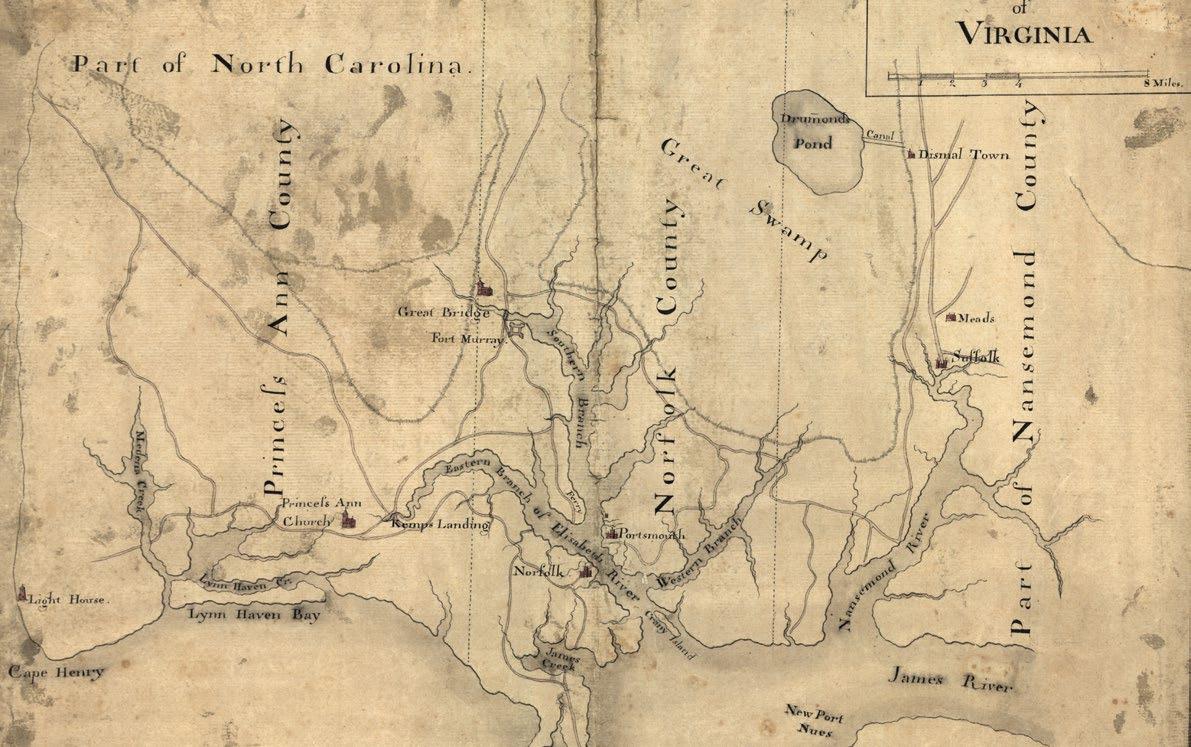
Map of part of the Tidewater Province of Virginia, 1791 (Courtesy of Library of Congress).
of October 26 and 27, Squire attempted to land a force of men in downtown Hampton, but accurate Patriot gunfire repeatedly drove the British tenders away. Though the battle was strategically inconsequential, several British soldiers were killed and wounded. Blood had finally been spilt in Virginia.
Soon after the skirmish at Hampton, Woodford began moving his roughly 600-man detachment across the James River and headed toward Norfolk. As he approached the area, he was joined by more local militia, bringing his command close to 1,000 men. Dunmore, with roughly 150 soldiers from the 14th Regiment, a few dozen marines from his warships, and a handful of Black and white Loyalist volunteers, recognized he needed to do something drastic to boost his ranks in the absence of reinforcements. So on November 7, 1775, Dunmore penned his soon to be well-known proclamation that enacted three key policies: he declared martial law in Virginia; he raised the “King’s Standard,” meaning all ablebodied white men were expected to join his forces or else be considered traitors; and he offered freedom to all “indentured Servants, Negroes, or others (appertaining to Rebels) . . . that are able and willing to bear Arms.” But like Abraham Lincoln in a future war, Dunmore realized these radical measures would have far greater effect if issued from a position of strength, so he waited for a victory to make his proclamation public.
He did not have to wait long. On November 14, Dunmore learned about a gathering of several hundred militia at Kemp’s Landing, a small settlement in Princess Anne County. Though outnumbered, Dunmore’s professionals quickly routed the inexperienced Patriot soldiers—killing, wounding, and capturing more than a dozen of them. Dunmore seized on this victory and issued his proclamation.
Loyalist leaning Virginians reacted positively to Dunmore’s call to arms. Several hundred men volunteered for the newly formed white Loyalist unit, the Queen’s Own Loyal Regiment, and thousands more in the Norfolk region took an oath of allegiance to defend the crown's authority. Black Virginians rejoiced now that Dunmore formalized his policy of accepting enslaved people into his army. Within a matter of weeks, he had
several hundred African American men organized into what he called his Ethiopian Regiment, some of whom reportedly wore uniforms with the motto “Liberty to Slaves” emblazoned across their chests. Seven months after his famous speech, enslaved people were conspicuously using Patrick Henry’s lofty rhetoric to symbolize their own struggle for liberty.
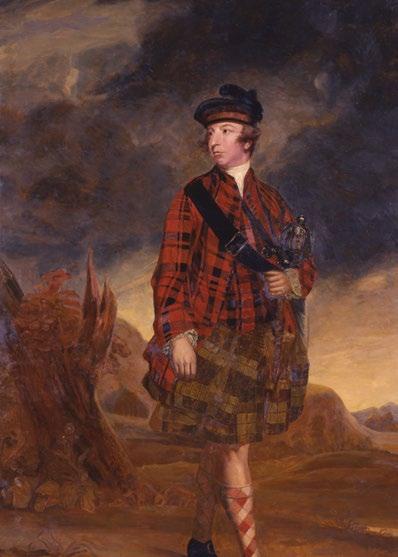
Murray, Fourth Earl of Dunmore, 1929 (VMHC Collection).
Predictably, news of Dunmore’s Proclamation incensed and terrified Patriot leadership. The Committee of Safety quickly published their own proclamation in the Virginia Gazette, directly addressing enslaved people and threatening them with death if they sided with Dunmore. Many Virginians who remained on the fence about joining the Patriot movement now agreed with their more radical neighbors that the governor’s actions threatened the stability of the colony’s slave society. Virginia’s Patriot leadership took direct action in response, calling a Fourth Virginia Convention to meet in Williamsburg at the beginning of December. This meeting authorized the raising of six more regiments of regulars and passed a series of ordinances “for establishing a MODE of PUNISHMENT for the ENEMIES to AMERICA in this colony.” News of Dunmore’s actions quickly spread across the colonies. Even Washington, commanding
the Continental Army outside of Boston, feared “If . . . that Man [Dunmore] is not crushed before Spring, he will become the most formidable Enemy America has.” Although he temporarily reinforced his army, Dunmore inadvertently stoked Virginia’s revolutionary movement from an ember to a full blaze.
While the reverberations of Dunmore’s Proclamation spread across the colonies, Colonel Woodford continued his approach toward Norfolk. In anticipation, Dunmore ordered the fortification of the strategic crossing at Great Bridge, which controlled the southern approaches to the city. By the beginning of December, the two forces faced off across the swampy Elizabeth River. Fearing Woodford would soon be reinforced by soldiers from North Carolina’s Patriot army, on December 9, Dunmore ordered an attack. Leading the charge was Captain Charles Fordyce and 120 British regulars of the 14th Regiment, who had to march roughly 200 yards over a narrow causeway to reach the Patriot entrenchments. Holding their fire until the British were within 50 yards, the Patriots blasted the British front ranks. Captain Fordyce rallied his men and urged them forward until he was mortally wounded by more than a dozen gunshots just fifteen feet from the fortifications. After the death of their commander, the British charge collapsed. From beginning to end, the battle lasted less than 30 minutes, and when the smoke cleared, 17 British soldiers lay dead and more than 40 were wounded. Miraculously, only one Patriot soldier was injured. Afterward, an observer was shocked when he “saw the horrors of war in perfection, worse than can be imagin’d; 10 and 12 bullets thro’ many; limbs broke in 2 or 3 places; brains turning out. Good God, what a sight!”
– Patriot Soldier “ “
...fire was so great the Clouds above the Town appeared as red and bright as they do in an evening at sun setting.
On several occasions, the Patriots attacked British shore parties attempting to obtain fresh supplies. In retaliation, on New Year’s Day 1776, Dunmore ordered his ships to bombard Norfolk's waterfront and sent men ashore to burn warehouses the Patriots used as shelter. By that evening, the fires along the city's wharf district had mostly burned themselves out, but the flames soon returned. One Patriot soldier across the water in Hampton reported the “fire was so great the Clouds above the Town appeared as red and bright as they do in an evening at sun setting.” Furious that the region had provided so much support
With the loss of so many of his professional soldiers, Dunmore realized he could no longer defend Norfolk and ordered his men to board his small fleet of warships. Norfolk’s many Loyalist civilians quickly followed Dunmore’s example, and a flotilla of several hundred vessels of all shapes and sizes soon floated in Norfolk’s harbor. Woodford occupied the city shortly thereafter, but tensions with Dunmore remained high.
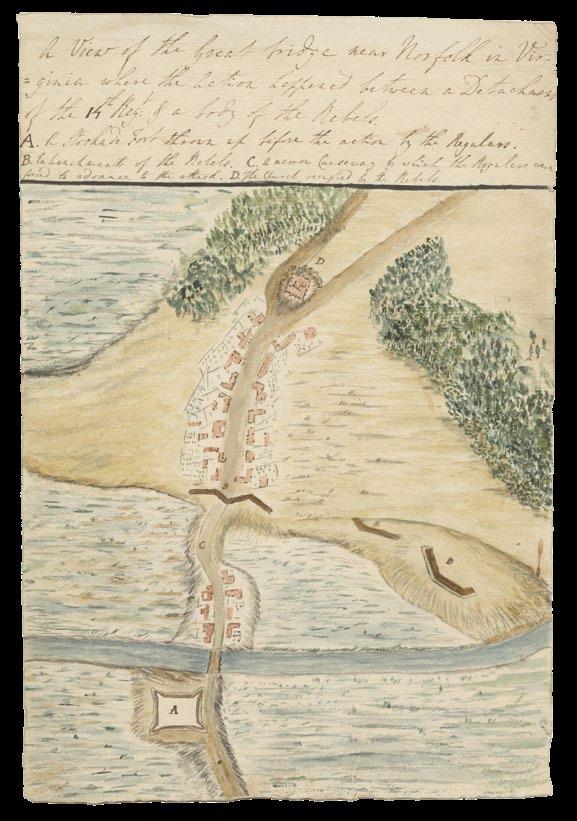
A view of the Battle of Great Bridge, 1775 (Courtesy of University of Michigan Library).
to Dunmore over the previous six months, Patriot soldiers took their revenge and rampaged through the city with the tacit approval of their commander, who had earlier described the city’s residents as a “contemptible set of wretches.” Instead of disavowing these actions, the convention in Williamsburg gave Woodford the authority to destroy the remaining homes of Norfolk that “may be useful to our enemies.”
Before leaving the area in early February, Patriot forces followed through on these orders, burning the remaining 400-plus structures left standing. More than 90 percent of Virginia's largest city was completely razed to the ground.
A 1777 investigation by the House of Delegates confirmed the claims of all those who witnessed the atrocity. Dunmore's bombardment accounted for the destruction of just 54 of 1,300 destroyed structures. Woodford's men destroyed the rest. But these embarrassing findings were not made public until more than 60 years later. Instead, Patriot leadership suppressed the report, blamed Dunmore, and spread the news of his alleged depravities far and wide. Advocates for independence celebrated. They correctly believed the severity of purported British crimes would push more people to support that most radical of propositions.
Although Dunmore would remain in Virginia for another eight months, by the close of 1775, his chances of reasserting control in the colony had evaporated. The events of October through January left a lasting mark on the course of the Revolution. A version of Dunmore’s Proclamation later became official British army policy, meaning for many of the hundreds of thousands of enslaved people in America, freedom wore a red coat.
When the Continental Congress adopted the Declaration of Independence on July 4, 1776, their accusation that the king’s representatives “burnt our towns, and destroyed the lives of our people” and “excited domestic insurrections amongst us” directly referred to the burning of Norfolk and Dunmore's Proclamation, respectively. The violence of the fall and winter of 1775 proved to Jefferson and others that the opportunity for compromise was over.

Virginia & The Forging of A Nation Special Exhibition
On Display Until January 4, 2026
Virginians—through their ideas, influence, and efforts—helped forge a new American nation.
Commemorating the 250th anniversary of the Declaration of Independence, Give Me Liberty highlights Virginia’s leading role in the American Revolution. It explores the continental and global forces as well as the actions of both iconic and ordinary people that brought about a model of democratic government that changed the world.
Give Me Liberty was produced in partnership by the Virginia Museum of History & Culture and Jamestown-Yorktown Foundation. It is presented by Virginia’s American Revolution 250 Commission.

Edmund Pendleton’s copy of the Virginia Constitutional Ratification Document, 1788 (VMHC; Helen Marie Taylor Collection).
In June 1788, 168 delegates gathered in Richmond for more than three weeks to debate ratification of the Constitution of the United States. Far from inevitable, the outcome hinged on fierce arguments both for and against ratification, led by prominent figures of Virginia’s revolutionary generation, including Patrick Henry, James Madison, George Mason, Richard Henry Lee, James Monroe, and Edmund Randolph. Edmund Pendleton, a seasoned statesman, presided over the proceedings, working to moderate the intensity of the debate and guide the convention through its charged deliberations.
At the Constitutional Convention the year before, Virginia had played a central role. George Washington presided, and Madison’s “Virginia Plan” formed the foundation of the final document. After months of debate, the Constitution was signed and circulated to the states for ratification. By the time Virginia’s ratifying convention convened, eight states had already approved the Constitution, meaning only one more was needed to put it into effect. In Richmond, the delegates quickly divided into two camps. The Antifederalists, led by Patrick Henry, opposed the Constitution as written and called for substantial revisions to protect state and individual rights. The Federalists, led by Madison, urged ratification as essential to preserving the union and strengthening national government. Henry dominated the proceedings with his characteristic oratory, while Madison responded with measured arguments and quiet lobbying to win over undecided delegates. When Henry introduced a sweeping list of 40 conditional amendments, Madison and his allies proposed a more practical alternative: ratify the Constitution and separately recommend amendments and a Declaration of Rights for future consideration by Congress.
On June 25, after impassioned exchanges and shifting alliances, the convention voted narrowly to ratify the Constitution by a margin of 89 to 79. Two days later, the delegates also resolved to recommend that Congress consider adopting a Declaration of Rights along with a series of amendments to the Constitution, many of which were later echoed in the Bill of Rights, which took effect after Virginia ratified them in December 1791.
Although the official ratification document was sent to Congress, Pendleton retained a copy that has recently been conserved by the Virginia Museum of History & Culture as part of the
Honorable Helen Marie Taylor Collection held by the Museum. Across this rare national treasure’s fourteen pages, the tally of votes are recorded and the forty proposed amendments are outlined in elegant cursive script. Extensive conservation work, taking many months, stabilized the manuscript, which had become brittle and fractured in many places over time. Pendleton’s copy of the final resolution belies the intensity of the preceding debates. In spare legal language, it reads: “We the said delegates, in the name and in behalf of the people of Virginia, do by these presents assent to and ratify the Constitution . . . hereby announcing to all those whom it may concern, that the said Constitution is binding upon the said people.”
As the Commonwealth and the nation prepare to commemorate the 250th anniversary of the Declaration of Independence, this document offers valuable insight into how revolutionary fervor gave way to the difficult and often contentious work of building a new republic.

Free for members!
Poplar Forest: The Lost Private World of Thomas Jefferson by Travis McDonald
Oct. 30 12:00 pm
Declarations of Independence: Indigenous Resilience, Colonial Rivalries, and the Cost of Revolution by Christopher Pearl
Nov. 6 12:00 pm
After the Fire: Richmond in Defeat by Nelson D. Lankford
Nov. 20 6:00 pm
The Painter's Fire: A Forgotten History of the Artists Who Championed the American Revolution by Zara Anishanslin
Dec. 4 12:00 pm
Unlikely Collaborators: Abraham Lincoln, Frederick Douglass, and the Promise of America by Dr. Jonathan White
Dec. 18 12:00 pm
MARSHALL SCHOLAR LECTURE
The Pursuit of Liberty: How Hamilton Vs. Jefferson Ignited the Lasting Battle Over Power in America by Jeffrey Rosen, President & CEO, National Constitution Center
Jan. 21 5:30 pm
To register and view all of our upcoming events, visit VirginiaHistory.org/Calendar
First Fridays at VMHC
The museum remains open late for this free, family-friendly event.
First Fridays made possible with support from Virginia R. Edmunds. First Friday each month 5:00 pm–8:00 pm
18th Century Chocolate Making Demonstrations
This free, family-friendly program will feature outdoor games and toys from yesteryear.
Every Saturday in Dec. 11:00 am–2:00 pm
Curator Conversation: Collections Acquisition Roundtable, 2025 Edition (VIRTUAL)
Join members of the VMHC curatorial team as they share some of their favorite objects and stories that were added to the museum’s remarkable collections in 2025.
Dec. 1 10:00 am
Member Appreciation Day
Members enjoy 20% discounts (regularly 10%) ALL DAY in VMHC's Commonwealth Café and Museum Store. Plus, register for exclusive member-only gallery tours. Dec. 2 10:00 am
Virginia House Holiday Open House
Spend time exploring the historic Virginia House and gardens decorated for the holidays. Dec. 14 12:00 pm–4:00 pm
Used Book Sale
Donate books until Dec. 28
Shop Dec. 30–Jan. 11 All proceeds support VMHC Educational programs.
Living History Weekend
50+ reenactors will fill the museum and grounds with the sights, sounds, and stories of the Revolutionary era. Nov. 15 & 16
Maker Market
Shop unique, handcrafted gifts from artists and artisans inspired by the Revolutionary era! Enjoy live craft demos, food trucks, music, family fun, and FREE museum admission on Friday evening and all-day shopping on Saturday!
Dec. 5 & 6
Movie Mythbusting LIVE! –
National Treasure
Join the VMHC for an in-person screening of the action-adventure blockbuster National Treasure (2004), with live commentary from VMHC staff on what’s true, what’s not, and unique connections to the VMHC collection.
Dec. 19 6:00 pm
History Notes
This special evening of music and history pairs a brief history talk featuring rare items from the museum's collection with inspired musical selections played by a Richmond Symphony chamber ensemble.
Mar. 12 6:00 pm
Citizenship Ceremony
Gather at the VMHC for President's Day to watch America’s newest citizens take their oath, enjoy live music, explore the galleries, and see rare artifacts on display for one day only. Feb. 16 11:00 am
Season Two of Revolution Revisited follows the story of the Revolution as the colony moves from protests to open war, from royal authority to self-government, and from loyalty to independence.
Hear how Washington takes command of the Continental Army, how Dunmore’s Proclamation shakes the foundations of both slavery and loyalty, and how ordinary Virginians confront extraordinary choices. Witness the birth of Virginia’s new government, its Declaration of Rights, and the momentous adoption of the Declaration of Independence.
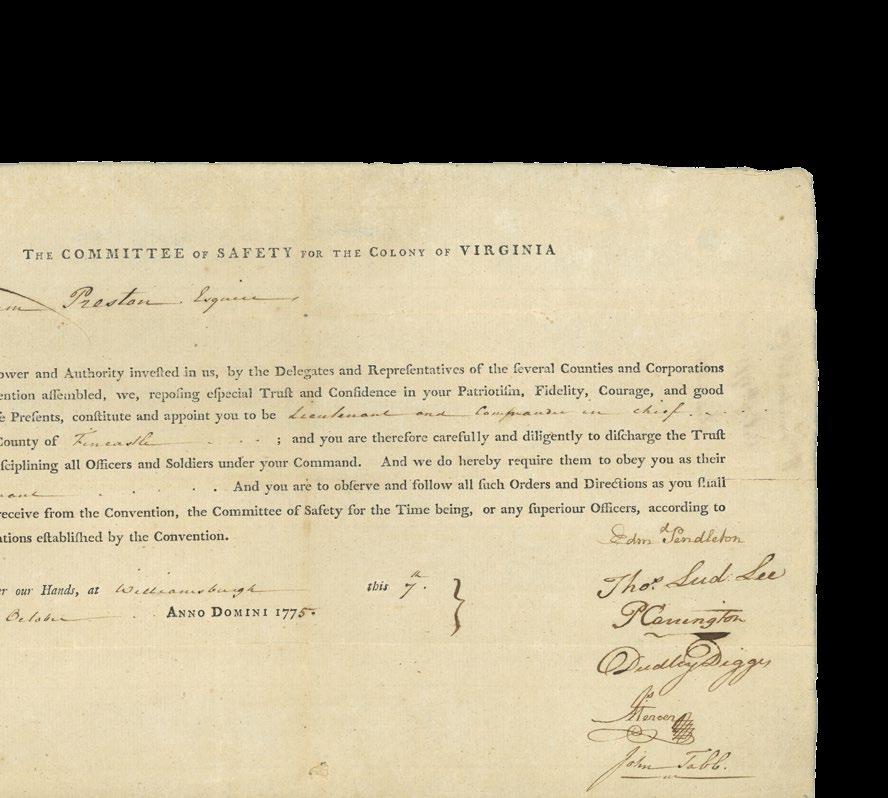
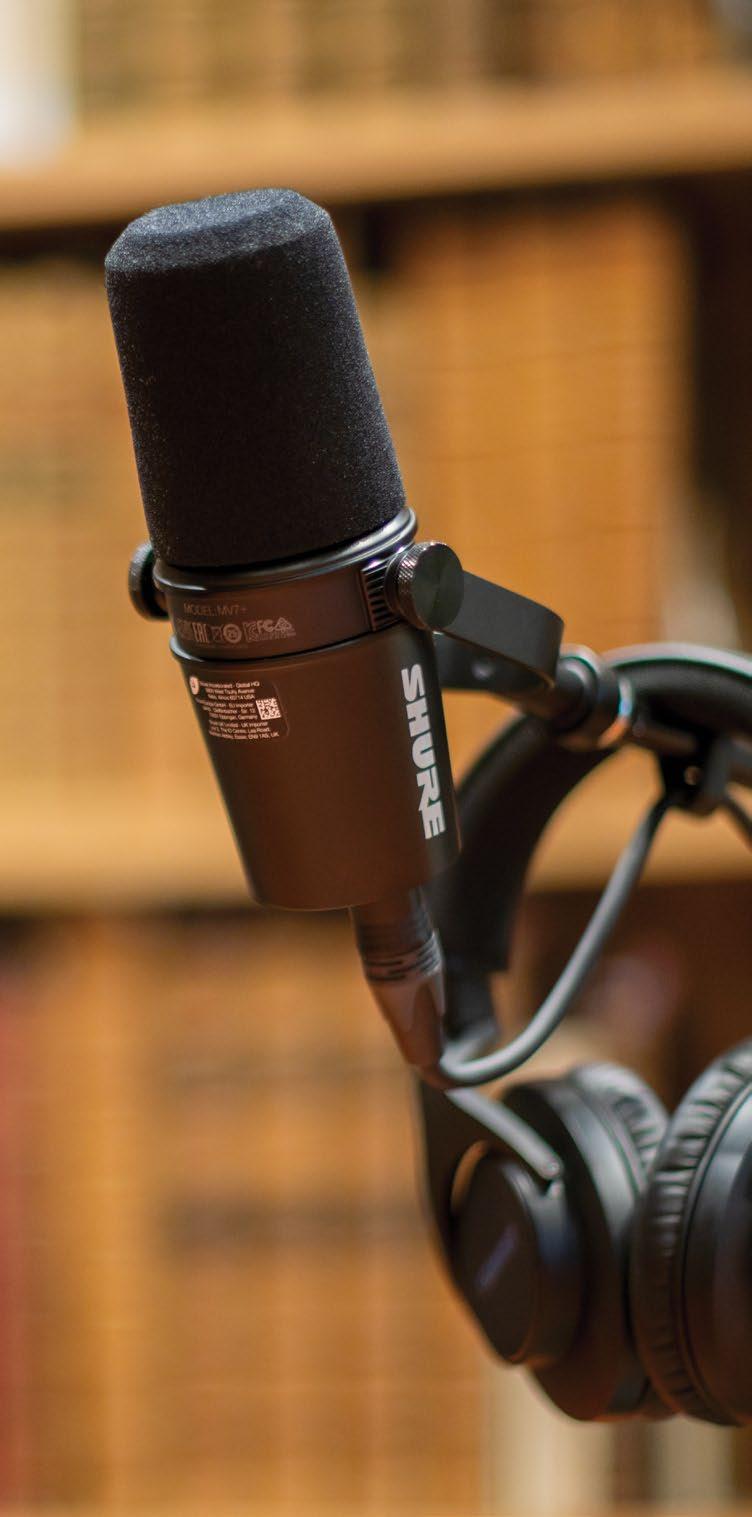
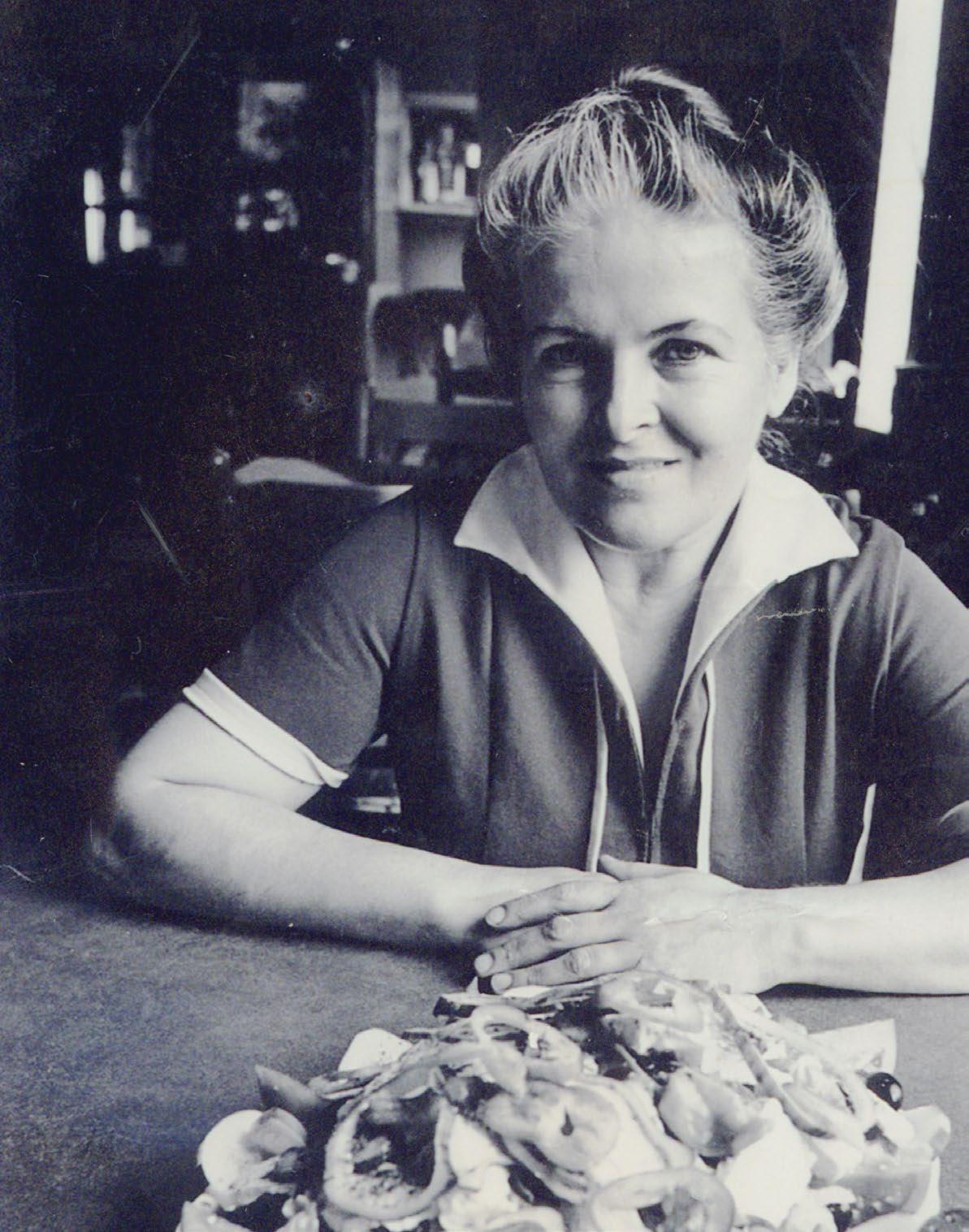

Greek immigrant Stella Dikos forged a place for herself, created community, raised a family, and built a legacy in Richmond. Described as having an inner light, Stella built trust and relationships in a quiet way—working hard without complaint, connecting in close conversations, and helping people in need. Her difficult childhood and journey to Virginia were a part of her identity. So, too, were her loving family and friends and her drive to not just succeed, but to shine.
“ “
I worked hard and got the respect of the community, and for that I’m grateful.
– Stella Dikos
Stella Dikos (née Kafantaris) was born during the Second World War in Trikala, Greece. In Stella’s youth, occupation by the Italian and German armies and wartime scarcity must have affected her life. However, it was the death of her mother when Stella was three years old that impacted every aspect of who she was. Her father, Mikhail, a tailor and beekeeper, was distant as he grieved. It was Stella’s grandmother, aunts, and women in the community who guided Stella as she grew up. She learned to cook in their kitchens, which became a place for Stella to find solace and build relationships.
Mikhail made sure both Stella and her brother Nick received a good education, and he paid for them to attend English language classes. Still, in Greece, a nation recovering from war, there were few choices for an 18-year-old woman. Stella’s aunt suggested marriage to a Greek American who was looking for a Greek woman to share his life. Stavros Dikos moved to the United States more than a decade before and opened The Village Restaurant in Richmond, Virginia, in 1956. Stella and Stavros spent some time together. He was 18 years older, but she saw warmth in his eyes.
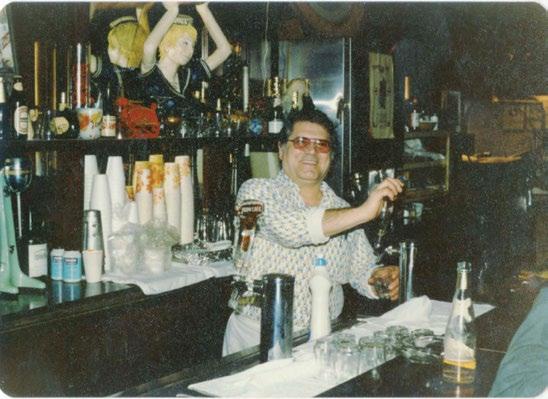
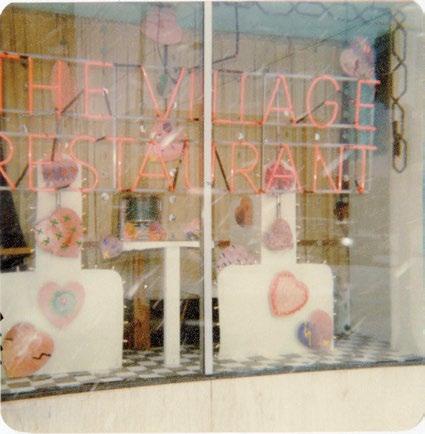
of The Village Restaurant, 1972–1973 (Courtesy the
Imagine what it took to make that decision—leaving home and family (maybe forever), marrying a man she barely knew, and building a life in America with all the potential sacrifices and opportunities. “Do you think you would like America?” Stavros asked. Stella thought she would. They married on March 4, 1962, and two months later Stella was on an airplane to New York. The next day she was helping in The Village Restaurant, located on Harrison Street. Bill Beville, a young aspiring writer, was a regular and remembers Stella’s first day at “The Village.” To him, Stella was quiet, beautiful, and considerate.
Stella put her education to work helping Stavros with the business side of the restaurant. When she decided to come to the United States, Stella thought she might attend college in Virginia, but between work and the birth of their son Demetrios (Jim) in December of 1962, there was little opportunity for college. But she had the restaurant.
The Village, located in Richmond’s Fan District, became the place where Stella created community. It was a gathering place for characters—artists, authors, activists, and dreamers who discussed art, politics, and bantered with Stavros and Stella. Stavros named it The Village Restaurant because it reminded him of his home village where everyone knew each other.
Over time Stella became the person others came to for a sympathetic ear. Another regular at The Village, Sue Swartout, says Stella demonstrated care and generosity. Bill Beville noticed how Stella would quietly place one of Stavros’s famous sub sandwiches in front of someone unable to buy a meal. Rita Lawrence started working there in 1973. “It kind of felt like home, where [Stavros] and Stella were the parents of these misfits,” she said.
Stella became the lifeblood of the business. When back pain forced Stavros to work fewer hours, Stella opened the doors, worked all day, and balanced the books until late at night. Then in 1981, the Dikos family came to a crossroads. The building owner would not sell or create a long-term lease so they could not make any improvements to the restaurant. It was risky, but Stella convinced Stavros that they could start again. On the last day of The Village, longtime customers sent flowers and cards. “They felt it was a funeral; that something was dying,” said Stella later to journalist Eileen Mellon.
I learned so much, especially with the communication with the people. They love me and I love them back.
– Stella Dikos
“
The community Stella built over almost 20 years at The Village and their love of her Greek food inspired her to imagine something new. She and Stavros opened “Stella’s” on Harrison Street in April 1983. “It was a necessity to open Stella’s. I needed to succeed,” Stella later said. People flocked there for the simple but delicious food and famous bread inspired by Stella’s childhood. Twelve years later, bad business investments forced Stavros and Stella to close Stella’s. Meanwhile, their daughter Katrina and her husband Johnny Giavos started their own restaurant in 1991, and Stella helped by cooking and caring for her young grandchildren.
Three years passed before inspiration struck again. Walking with her grandson, Stella saw the building at the corner of Main and Rowland streets for sale—it was time for a new dream. Stella’s Café opened in 1998 with coffee,
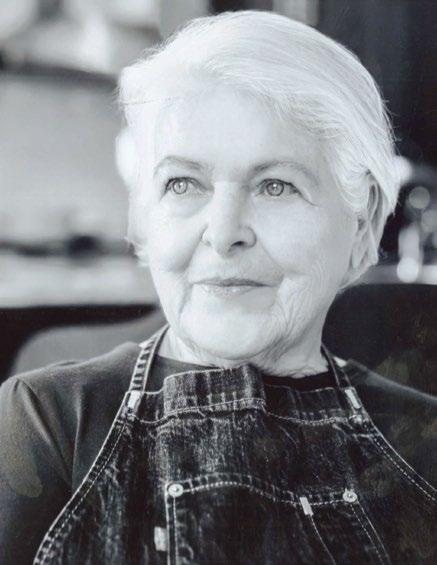
Stella in her restaurant on Lafayette St., 2000s (Courtesy the Dikos family).
sandwiches, and pastries. The community again followed Stella but clamored for the food she served before. Within a month, the new business was just “Stella’s” and the menu expanded. Stavros’s ill health forced another closure in 2007. Stella cared for Stavros for almost two years and worked at restaurants owned by her bother Nick and daughter Katrina.
Finally, the third Stella’s opened in 2011 at its present location on Lafayette Street. Excitement was tempered however by the death of Stavros only two weeks before opening day. This venture was a partnership with Katrina and Johnny, and in 2015 they opened Stella’s Grocery across the street. Today, Stella’s legacy includes two restaurant locations in Richmond, one in Charleston, South Carolina, and seven markets.
Stella Dikos worked in her kitchen preparing specialties for the restaurants and markets that carry her name up to the last few days of her life in June 2024. The community mourned along with her family and friends. Stella’s family searched for a place in the community that could possibly

The VMHC is proud of its special partnership with Stella's Grocery, which brings beloved dishes to the museum's Commonwealth Café. Featuring grab-and-go, dine-in, and retail options, the café offers a welcoming spot for museum guests and the community.
accommodate a memorial that no doubt hundreds would attend. Reaching back to Stella’s first years in Richmond, they approached the Virginia Museum of History & Culture to host the memorial. As a new immigrant, Stella would visit the museum to improve her English skills, reading the history of our Commonwealth, and valued the institution as part of the community—a community she helped create. Special thanks to Bill Beville, Eileen Mellon, and Sue Swartout for sharing their memories of Stella and The Village Restaurant.

Abraham Peyton Skipwith was the first known Black homeowner in Richmond’s historic Jackson Ward neighborhood, and he was believed to be the first Black Richmonder to have a fully executed will. Today, a local history organization is working to preserve his unique legacy and reconstruct his home.
Skipwith, a mixed-race Black man, was born in Williamsburg, Virginia, in the late 18th century (as early as 1767). Through the American Revolution, he was enslaved by Jaquelin Ambler, who served as Treasurer of Virginia in Governor Thomas Jefferson’s cabinet, and Rebecca Lewis Burwell.
In 1782, Skipwith was sold by Ambler to Thomas Bentley. Then, just a few years later, in 1785, when Bentley died without completing plans to free Skipwith, Abraham was, per the terms of Bentley’s estate, enslaved by merchants Thomas Keene and James Warington.
Skipwith submitted a petition to Virginia’s General Assembly requesting his freedom as promised by Thomas Bentley. Referred to the state’s Court of Justice, the petition was denied. Skipwith’s petition was notable because it revealed his political connections, to include a witness statement by Benjamin Harrison V, who in addition to being a signer of the Declaration of Independence, was also the father of the 9th president and great-grandfather of the 23rd president of the United States.
Ultimately, Skipwith earned enough money to purchase his freedom from Keene and Warington in 1789.
Within four years, in 1793, Skipwith purchased parcels of land on the northern edge of the City of Richmond for 15 pounds and 5 shillings in what would become present-day Jackson Ward—building a gambrelroofed cottage now known as the Skipwith-Roper Cottage, one of the city’s oldest documented
dwellings. The cottage was a 1.5-story, wood-frame, weather-board-clad house with a raised basement and single-bay Greek revival porch featuring Doric columns.
Skipwith was clearly resourceful because he had accumulated significant property and other personal assets in his lifetime. Leading him, before he passed in 1797, to do something personally and historically significant—he created a will. In his bequest, he left the cottage to his wife, Cloe, and granddaughter, Maria, both of whom he manumitted around 1794, in addition to leaving several personal possessions, such as a gun, gold, silver, furniture, china, clothing, livestock, and a horse and buggy. Significantly, he also left funds for the manumission and education of his descendants. When his granddaughter Maria married Peter Roper, a free Black man, in 1805, she brought to the marriage property she inherited from Skipwith.
Skipwith’s descendants would emerge as entrepreneurs and elected leaders across Jackson Ward in the 1800s. Alpheus and Ebenezer Roper, sons of Peter and Maria, were founding members of the Union Burial Ground Society, which was established in 1848 to provide death benefits for its members.

Skipwith-Roper Cottage — Edith Shelton Collection, 1956 (Courtesy of The Valentine).
As another example, when the ward was created as a political district on April 17, 1871, Alpheus was elected as one of the first Black representatives on the Richmond Common Council. He also helped to organize a voter mobilization campaign that resulted in the election of 24 Black Delegates to the 1868–69 State Constitutional Convention, which passed legislation to recognize Black Virginians as full citizens (rights largely retracked by the 1902 state constitution).
In 1904, the Skipwith-Roper Cottage was sold by Skipwith’s last known descendant, Marietta Roper, to Abram Coleman. The cottage, like many properties in the Jackson Ward area, was condemned in 1954 by the Richmond-Petersburg Turnpike Authority as part of the creation of Interstate 95. The cottage was then sold for $25 and relocated to Goochland for private use.
Taking inspiration from a recurring instruction to Cloe in Skipwith’s will, “to her and her heirs forever,” The JXN Project intends to restore Skipwith’s story in Richmond. “The SkipwithRoper Homecoming” includes the multi-phased reconstruction of the cottage in Jackson Ward, and, eventually, a new
research lab and library, as well as a coworking space and greenspace for community programming and placemaking.
The story of Abraham Skipwith is currently being featured in an exhibition titled House to Highway: Reclaiming a Community History at the Library of Virginia through February 2026, and a new film titled Declarations of Independence produced in partnership with VPM will air in Summer 2026. The JXN Project was a 2024 recipient of a grant from VMHC’s Commonwealth History Fund.
The JXN Project is a 501(c)(3) non-profit organization founded by Dr. Sesha Joi Moon and Enjoli J. Moon.
TheJXNProject.org
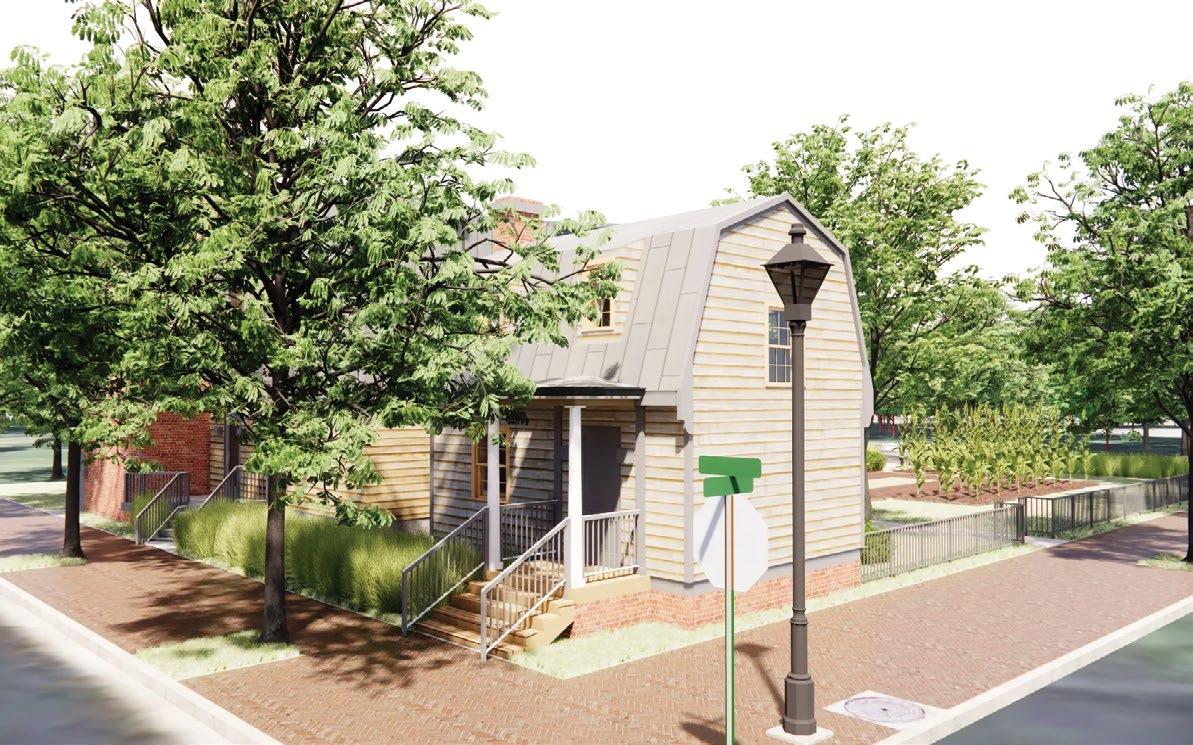
To the Honorable the Speaker and Members of the House of Delegates:
The petition of Abraham, a Mulatto man slave, belonging to the Estate of Thomas Bentley deceased, humbly sheweth:
That during the life time of his late master, your petitioner by a series of the most faithful, assiduous and affectionate services, obtained the confidence and regard of his said master inasmuch that he was rather regarded as a Clerk and assistant than in the unfortunate character of a Slave, and during the life time of his said master was always entrusted with the care, account, and disposition of his Money, effects and other property; That in testimony of these services your petitioners said Master always expressed, and by the affectionate treatment of your petitioner manifested, a uniform intention to grant your petitioner his freedom, and in his last illness frequently declared the same intention, and, as your petitioner believers was only prevented from so doing, either by will or deed, by the sudden manner of his death; That your petitioner being advised as well by the administrator and principal Legatee of his said Master, as by many other Gentlemen who were also well acquainted with his said Masters intentions towards him, that the creditors of the Estate will receive no Injury by the grant of your petitioners freedom, and in full confidence that he can produce the most decided testimony of his said late Masters promises and intentions towards him, humbly prays that in conformity thereto, an act may pass for granting to your petitioner the blessing of freedom.
And he as in duty bound will ever pray. Abraham’s petition, for freedom. November 22d, 1785
Referred to Court of Justice.
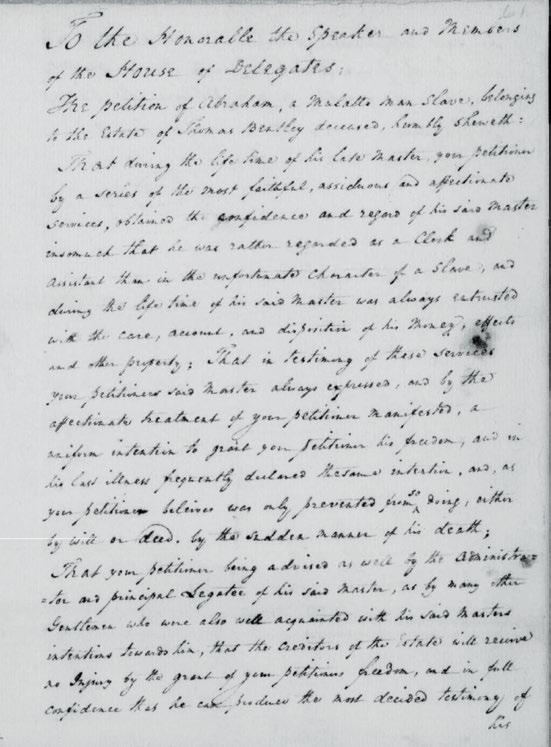
Abraham Skipwith's Petition for Freedom, 1785 (Courtesy of Library of Virginia).
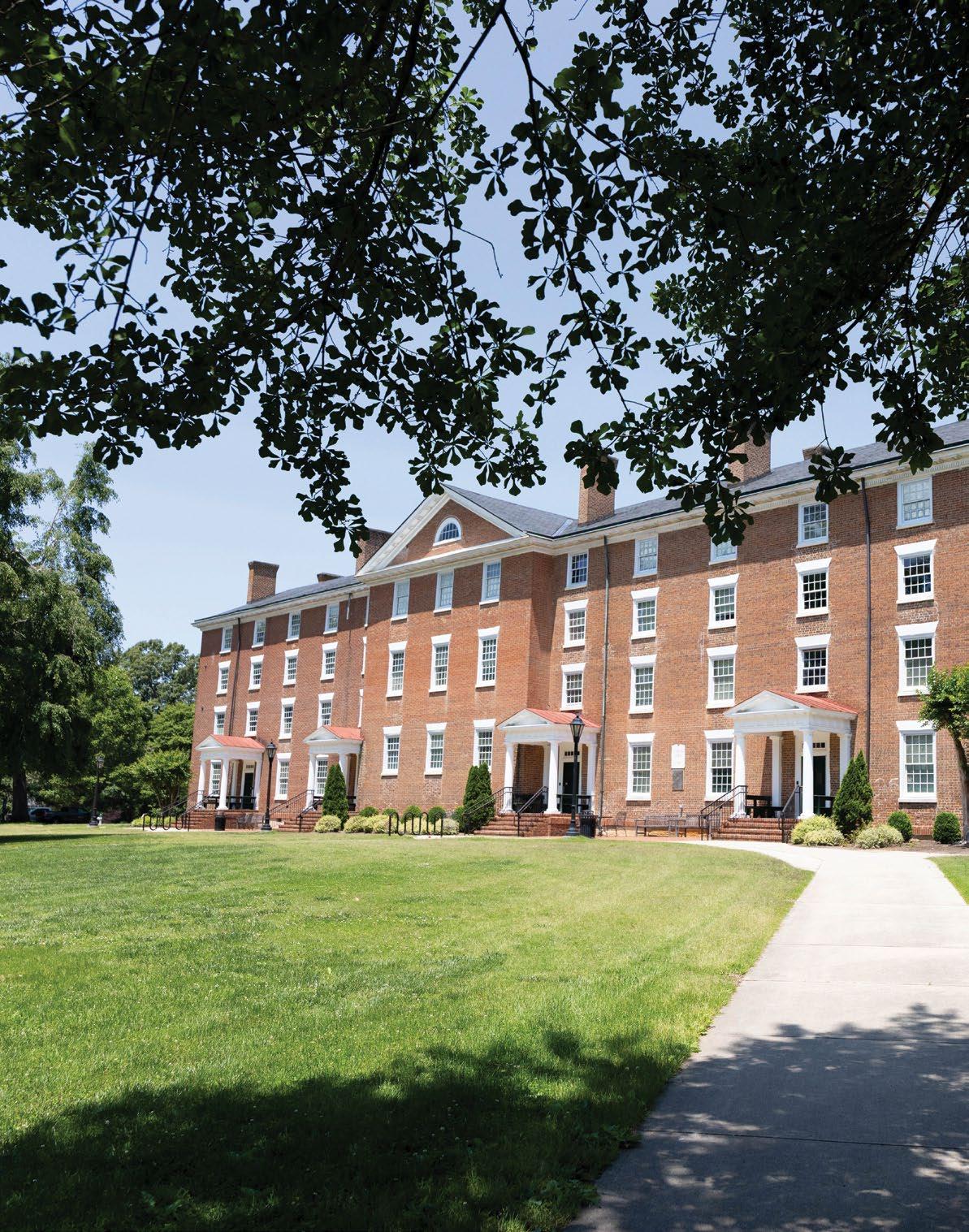


Sketch of “Academy House,” Hampden-Sydney College's first academic building, constructed 1775–1776 (Courtesy of Hampden-Sydney College).
Discontent among American colonists had been simmering for years. One thousand British soldiers were stationed in Boston since 1768. In 1774, the port of Boston was closed providing the colonists a clear example of the economic disruption that could be imposed at will by the British government. In fall 1774, representatives of eleven of the thirteen colonies gathered in Philadelphia at the First Continental Congress and attempted to agree on a united response.
Hundreds of miles south of Boston and Philadelphia in a thinly populated and agrarian section of the largest and most prosperous of the American colonies, a group of determined Presbyterian clergy, along with both Presbyterian and Anglican laymen, were close to realizing a plan that first emerged in 1771.
On February 1, 1775, a session of Hanover Presbytery met at Slate Hill, the plantation owned by Nathaniel Venable near Prince Edward Court House, to review the results of a successful fundraising effort by local Presbyterian congregations to establish an academy east of the Blue Ridge Mountains. Funds were allocated for the purchase of books and mathematical and scientific equipment. Members of the Presbytery visited potential sites near Prince Edward Courthouse (now Worsham) and decided on a tract of about 100 acres offered by Peter Johnston, a prominent local planter.
There they decided to build an academy building, rector’s house, a steward’s house, and such other necessary buildings as funds allowed. At the same meeting, four ministers and eight laymen were elected to serve as the board of trustees. The board elected Samuel Stanhope Smith as rector to head the new academy.
Samuel Stanhope Smith, a 23-year-old native Pennsylvanian and a 1769 graduate of The College of New Jersey (renamed Princeton University in 1896), had stepped forward to lead the new academy and traveled north to purchase books and
scientific equipment and to recruit faculty. In fall 1775, Smith advertised for students in Williamsburg’s Virginia Gazette with anticipation of beginning classes in November. He established a secular curriculum and the goal of the college “to form good men, and good citizens.”
Although established with strong ties to the Presbyterian Church, the founders guaranteed freedom of conscience and worship.
The selection of the names John Hampden and Algernon Sidney to christen the new college helps us understand the founders' inspiration. They chose to honor two men who challenged monarchical authority, as they themselves were in the process of doing. They were also challenging the authority of state religion. This new academy was the first to claim an American identity: non-sectarian, antimonarchical, and dedicated to the principles of self-government.

to the established educational order as represented by The College of William & Mary, royalist and Anglican, and the royal colonial government, and to publish that intention in the leading newspaper in the Virginia colony was in its own way a declaration of independence almost a year before July 4, 1776.
At the November 18, 1775, trustees meeting, Patrick Henry and James Madison were elected to the board. The contributions of Henry and Madison to the college’s early years were as different as the men themselves.
John Hampden (1595–1643) was a Puritan, landowner, and Parliamentary leader famous for his opposition to King Charles I over a form of royal taxation called ship money. This controversy contributed to the English Civil Wars. Hampden subsequently fought against the monarchy and died of injuries sustained at the Battle of Chalgrove Field in 1643.
Algernon Sidney (1613–1683) was a political theoretician. He was arrested as an accomplice in an attempt to assassinate King Charles II, and, after being tried and convicted, he was beheaded in 1683. At his trial, passages from the manuscript of his Discourses Concerning Government, where he argued for the citizens’ right of revolution, were introduced as evidence against him. Discourses Concerning Government was read and admired by American patriots including Thomas Jefferson, James Madison, John Adams, and Benjamin Franklin.
To found an institution named for two revolutionaries—one convicted of attempted regicide—so obviously in opposition
At the time of his election, Henry was famous as a political activist and orator. At the Virginia Convention in March of 1775, he delivered the phrase for which he is best known—“Give me liberty, or give me death!” In 1783, he helped to secure the state charter, which officially promoted the academy to a college. All schools in Virgina founded before the Revolution were designated as academies because William & Mary held the only charter. Institutions controlled by religious dissenters, such as Presbyterians, could not hold a charter from the colonial government. Curriculum at academies could be secondary or collegiate or a blend of the two given the young age of some students.
While at the College of New Jersey, James Madison was immersed in the liberalism of the Enlightenment and converted to 18th-century political radicalism. Madison and Samuel Stanhope Smith studied together under John Witherspoon, the only clergyman to sign the Declaration of Independence, and remained friends thereafter. Their shared views were the principles upon which Hampden-Sydney was founded.
The mission of the College—to form good men and good citizens—is rooted in the idea of civic virtue and is unchanged since the founding because it is essential to the functioning of a republic. It means to be motivated by a desire to achieve the public or common good, the benefit or interests of all.

Civic virtue motivates the actions of the good man and good citizen and is the standard by which one’s actions are judged.
In the first year of the Revolution, the college’s students and faculty were actively involved in the war effort. In the spring of 1776, Governor Patrick Henry sent a requisition to Prince Edward County for militia. Sixty-five students over the draft age of 16 formed a company, part of the Prince Edward militia, which was drilling by July 25.
Here we come to one of Hampden-Sydney’s most enduring legends: the origin of the school colors of garnet and grey. It is said that the company’s uniform was a simple modification of ordinary grey hunting trousers and shirts, the shirts dyed purple with the juice of the pokeberry plant.
In September 1777, the student company spent 19 days on an expedition to Williamsburg. The company was thanked by Governor Henry and returned to college. In September 1778, the company marched to Petersburg. In neither case did the unit see military action, but it was not formally disbanded until peace was declared in 1783.
Documentary evidence is scanty, but available sources indicate that classes, as opposed to tutoring sessions, were held in January 1776, about the middle of the winter term. It is possible traditional classes were held before that date. The exact number of students that may have enrolled in November or were expected later in the winter term is yet unknown, but by the beginning of the summer term, 110 were enrolled.
Construction of the academy building continued to be problematic. The steward’s house and other campus buildings were made from wood, but the main building was to be more substantial; scholars agree that the structure, begun in the summer of 1775, was not expected to be completed until summer 1776. Standing three stories high, the 12-room building is believed to have been the largest structure of its kind west of Williamsburg. It was constructed of bricks made and timber cut on campus, and built by local craftsmen and laborers, free and enslaved. By 1840, almost all the 18th-century structures had deteriorated, and the academy building demolished.
In 1779, Samuel Stanhope Smith left to become president of The College of New Jersey, and the leadership fell on Samuel’s 23-year-old brother, John Blair Smith. The younger Smith was faced with maintaining and reviving an enterprise hampered by the war. In 1783, with the assistance of Patrick Henry, the General Assembly of Virginia was persuaded to grant a charter bestowing the power to grant degrees and to establish a self-perpetuating board.
To mark H-SC’s semiquincentennial, the VMHC, in partnership with the college, will display a series of special artifacts and archives Oct. 4, 2025–Jan. 4, 2026.
By the time of the appointment of Jonathan Cushing as president in 1821, Hampden-Sydney was well established and had outgrown, both in terms of enrollment and academic needs, its original buildings. Major building efforts culminated early in the 1830s with the completion of New College, now Cushing Hall, on an elevated ridge just south of the original campus.
Hampden-Sydney is the parent of two colleges—Union Theological Seminary and the Medical College of Virginia.
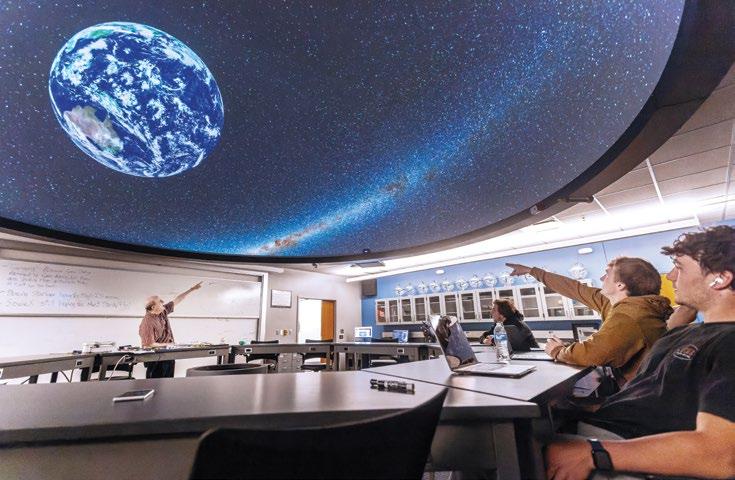
Union Theological claims a founding date of 1812 as a “theological adjunct of Hampden-Sydney College.” In 1825, John Holt Rice, head of the seminary, moved his family and students into a new seminary building on land adjacent to the Hampden-Sydney campus. At the time, it was only the first section of what is now Venable Hall. The seminary, a partnership of the synods of Virginia and North Carolina, grew and prospered. In 1898, Union Theological Seminary moved to Richmond, and Richard M. Venable, an alumnus and Baltimore attorney, purchased the property and gave it to Hampden-Sydney. Union Theological Seminary is now known as Union Presbyterian Seminary.
The medical department of Hampden-Sydney was located in Richmond—it opened in 1838 at the southwest corner of 19th and Main in the former Union Hotel. The Egyptian Building on Broad Street was completed in 1845 to house the Hampden-Sydney Medical Department. The college operated the medical department until 1854 when it became the independent Medical College of Virginia, which was later absorbed into Virginia Commonwealth University.
William Henry Harrison (1773–1841) enrolled at Hampden-Sydney College in 1787 at age 14. Harrison would eventually serve as Governor of the Indiana Territory,
U. S. General in the War of 1812, in the U.S. House of Representatives, Ohio Senate, U.S. Senate. In 1840 he was elected 9th president of the United States.
Both Hampden-Sydney College and the newly independent colonies, founded by the same men, were experiments in the belief that men had the ability and the right to develop their own systems of government and to worship as their consciences dictated. With this freedom came responsibility: to cultivate qualities of virtue and civic responsibility.
At its founding, Hampden-Sydney shared both a time period and philosophy with the America Revolution that no other college can claim.
Hampden-Sydney College, after 250 years, remains a distinctive institution in American higher education, and one of the few remaining colleges exclusively for men.
Commissioned by Virginia’s General Assembly in 1784, Jean-Antoine Houdon’s statue of George Washington in the Virginia State Capitol has long been an iconic image of the General. So much so, that an exact replica stands today in London’s famed Trafalgar Square. Presented by the people of the Commonwealth of Virginia to mark the centennial anniversary of the treaty that ended the War of 1812, the statue stands as a reminder of the enduring “Special Relationship” between the two nations. In June 2025, more than a century after its original dedication and in time for America's 250th anniversary, the Washington Statue in London was rededicated following a careful restoration. A delegation, led by Virginia’s Governor and First Lady and including the VMHC, participated in the special event and related celebrations.
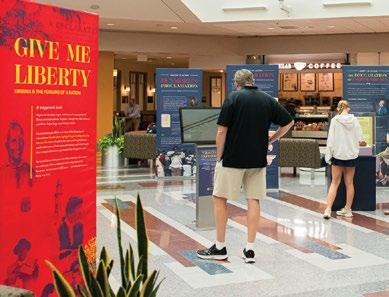
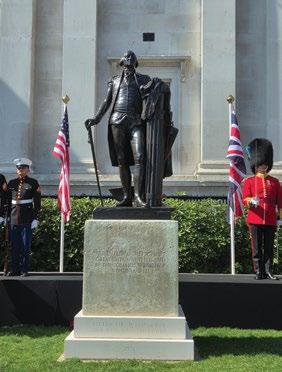
The traveling edition of Give Me Liberty: Virginia & The Forging of A Nation opened at Richmond International Airport in July, where it will enjoy a full-year run. Conspicuously situated in the main atrium connecting the two terminals, the display will greet more than 5 million travelers in the months ahead! Additional Give Me Liberty exhibit sets are now actively crisscrossing the Commonwealth on their way to more than 50 communities.
Un/Bound: Free Black Virginians, a new companion book to VMHC's newest exhibition, explores the lives of free people of color in Virginia, revealing under-told and often inspirational stories of Virginia’s past. Un/Bound features contributions from scholars at Norfolk State University, Richard Bland College, Virginia State University, and The College of William & Mary. It is available along with other VMHC publications online and in the museum store.
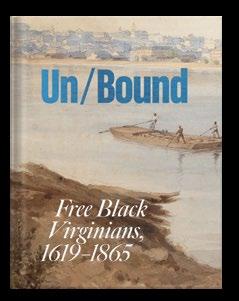
*Includes FY2026 reserve funds.
Based on FY2025 unaudited operating results. Intended only as an estimate for purposes of annual overview.
308M+ media impressions
1.3M website visits
Give Me Liberty
Member Preview
State of Museum
Curator Tours
Virtual Curator Conversations
Virginia Journeys
Travel Programs
Virginia Magazine of History & Biography Virginia History & Culture Magazine Give Me Liberty: Virginia & The Forging of a Nation
historians Patrick O’Donnell and Richard Brookhiser
1831 Society Socials
Member Mondays at Virginia House
Spring Garden Party at Virginia House
Holiday Reception at Virginia House
IN-PERSON & VIRTUAL PROGRAMS (A Sampling)
Madeira Tasting
Lexington & Concord 250th
Virginia Eats: Farm to Table
LEGO Build Workshops
Teacher Institutes
Homeschool Open House
Sensory Friendly Mornings
Virginia Brews
Virginia Distilled
Virginia Vines
Defiant Spirits
Becoming Citizens
Naturalization Ceremonies
First Fridays at the VMHC
Trick or Treat at VMHC
Pocahontas Reframed Film
Festival
Richmond Philharmonic
National Day of Racial Healing
Collections Up Close
Created Equal Film Series
History Notes
Virginia History Day
History Blooms
Conrad M. Hall Symposium for VA History
Richmond International Film Festival
Health in History
Dinner with the President
Art of the Cocktail
Richmond First Mayoral Debate
Lafayette Farewell Tour
Bicentennial Dinner
Here2Hear
Celebrating Virginia’s First Ladies
COLLABORATORS (A Sampling)
1882 Foundation
Afro-American Historical and Genealogical
Society of Greater Richmond
Asian American Society of Central Virginia
Black Judaic Heritage Center
Colonial Williamsburg Foundation
Coming Together Virginia
Cristo Rey
Hear2Hear
Initiatives of Change
Jamestown-Yorktown Foundation
Links Incorporated
MCV Foundation
National History Academy
Radio Poder
ReEstablish Richmond
Richmond Public Library
Richmond Public Schools
Richmond Region Tourism
Richmond Symphony
Shockoe Institute
University of Richmond
Virginia Association of Museums
Virginia Department of Historic Resources
Virginia Opera
Virginia Pride
Virginia Tech
Virginia Tribal Education Consortium
William & Mary
$100,000+
Altria Group
Atlantic Union Bank
Mr. and Mrs. David Beran
Blocker Foundation
Mr. and Mrs. Austin
Brockenbrough III
Mr. and Mrs. Harry F. Byrd, III
The Cabell Foundation
Beirne Carter Foundation
Community Foundation for a greater Richmond
Dominion Energy
Eleanor S. Evans Trust
Lettie Pate Evans Foundation
Richard P. Evans Trust
Farrell Family and Anne
Garland Farrell
Peter and Christie Farrell
Susan and David Goode
Conrad Mercer Hall
Russell and Susan Harper
Herndon Foundation
Huntington Ingalls Industries
Dr. Jan Meck
Lisa and Bill Moore
National Endowment for the Humanities
William and Ann Oppenhimer
Anne Mullen Orrell
Charitable Trust
Performance Food Group
Red Gates Foundation
Richard S. Reynolds Foundation
Virginia Sargeant
Reynolds Foundation
Mr. and Mrs. E. Claiborne
Robins, Jr.
Pamela K. Royall
Scottie and Tom Slater
Virginia Harrison Spratley, Mary Spratley Doss, and Mary Spratley Pellington
Bob and Lynn Taylor
Helen Marie Taylor
Charitable Foundation
Carole M. and Marcus
M. Weinstein
Weinstein Properties
Windsor Foundation Trust
Anne and Gene Worrell
Foundation
We gratefully acknowledge the support of all donors to the Virginia Museum of History & Culture (VMHC). Donors with cumulative giving of $250 or more during our most recent fiscal year 2025 (July 2024 – June 2025) are recognized below. Donor-advised funds of the Community Foundation for a greater Richmond are indicated by (*). Deceased donors are indicated by (^).
$50,000 – $99,999
Shannon and B. Marc Allen
H. Furlong Baldwin^
Blandford Rees Foundation
Susan S. Bogese
Brockenbrough
Aggie and Richard Cullen and Cullen Family Fund*
Melanie Trent De Schutter
June H. Guthrie Foundation
Halsey Family and Halsey Family Fund*
Hourigan
General and Mrs.
John P. Jumper
Loupassi Family
McGuireWoods
Katherine and Jack Nelson
Pamela and William O’Connor
Roller-Bottimore Foundation
Mr. and Mrs. Gerald F. Smith, Jr.
Vicki and Tom Snead
Virginia Law Foundation
Mr. and Mrs. J. Tracy Walker IV
$25,000 – $49,999
Dr. Tamara Charity-Brown and Carlos M. Brown
E. Rhodes and Leona B. Carpenter Foundation
Children’s Hospital of Richmond at VCU
Mary Louise Chrisman
Charitable Trust
Mary Louise Chrisman Family Trust
CultureWorks, Inc.
Mr. and Mrs. William C. Davis
Virginia R. Edmunds and Virginia Edmunds
Donor Advised Fund
Bryan Hagen
Mr. and Mrs. Kevin B. Osborne
R.E.B. Foundation
Barbara Basl Stokey
TowneBank
René Haeger Wenleder
$10,000 – $24,999
Bank of America Charitable Foundation, Inc.
Laura H. Boland
Jamie and Emily Bosket
Liza R. and Charles L. Cabell^
Joann and Victor O. Cardwell
Elisabeth Reed Carter
Charitable Lead Trust
Charles Fund, Inc.
Chrisman Family Foundation
Mr. and Mrs. Herbert
A. Claiborne III
Elizabeth and Tom Allen and Clovelly Foundation
Louise B. Cochrane
Charitable Foundation
William Martin Davenport, Jr. and Eleanor D. Davenport CLAT
George D. Dill Family
Foundation
Margaret Massie Disharoon
Charitable Lead Trust
Thomas L. Disharoon
Charitable Lead Trust
Joanie Eiland and Randy Laird
Mr. and Mrs. William H. Fralin, Jr.
Louise and George Freeman
Robert and Lynne Glasser
Michelle Gluck, John McGurl, and the Hacker Family
The Hon. Aimee R. and William J. Guidera
Victoria D. and Drew
Alan Harker
Wilbur Moreland Havens
Charitable Foundation
Katharine and Eugene Hickok
The Hon. C. N. Jenkins, Jr. and Dr. Pamela Royal Jenkins
Andi and Greg Kuhn
Mr. and Mrs. Linwood A.
Lacy, Jr. and Constance C. and Linwood A.
Lacy, Jr. Foundation
Mars Foundation, Incorporated
Massey Foundation
Matthew and Genevieve
Mezzanotte Foundation
Charlotte M. Minor and Charlotte and G. Gilmer
Minor, III Charitable Fund
Mr. and Mrs. Edward A. Mullen
General and Mrs. Richard B. Myers and Richard and Mary Jo Myers Family Foundation
Norfolk Southern
Peachtree House Foundation
Xavier R. Richardson
Anne Carter and Walter R. Robins, Jr. Foundation
Paul D. Ross, Jr.
William and Elizabeth Seegar
Mr. and Mrs. Everett C. Sherrill
Slatten-MacDonald Fund*
Barbara J. Thalhimer and William B. Thalhimer, Jr. Family Fund*
Mr. and Mrs. Alexander Y. Thomas and Giving Fund of Brigid and Sandy Thomas
Universal Leaf Foundation
Virginia Humanities
Wall Foundation
Mr. and Mrs. J. Latané
Ware, Jr. and Ware Charitable Account Fund
G. Michael Wildasin
$5,000 – $9,999
A. Marshall Acuff, Jr.
Allée Foundation
Americana Corner Fund of DonorsTrust
Neil and Amishi Amin
Melody Barnes and Marland
Buckner and Barnes Buckner Family Fund
Lisa-Margaret S. Bryan and L. S. and J. S. Bryan Fund*
Mrs. Paul D. Camp III
P. Douglas Camp, IV and Ruth Camp Campbell Foundation
Warren Fulton Chauncey
Chesapeake Corporation Foundation and Chesapeake Corporation Foundation Fund*
Society of the Cincinnati in the State of Virginia
Overton and Katharine Dennis Fund
W. Birch Douglass III
Michael Dry
E. B. Duff Charitable Lead Annuity Trust
Constance Dundas Foundation
First Citizens Bank
Barbara and Horace Ford
Jeanne and William Franklin
Page S. Frischkorn
Carolyn H. Garner and Thomas F. Garner, Jr.
Dr. and Mrs. William V. Garner
Gentry Locke Attorneys
Mr. and Mrs. Stephen M. Goddard and Stephen M. and Cheryl G. Goddard Family Fund*
Hamilton Beach Brands, Inc.
Hamilton Family Foundation
Mr. and Mrs. Elliott
McPherson Harrigan and Harrigan Family Fund*
Rudene T. Haynes
Mr. and Mrs. Richard K. Hines
Emily S. and Coleman A. Hunter Charitable Trust
Hunton Andrews Kurth LLP
Crawley F. Joyner III
Kip Kephart Foundation
Ann and John Kilian
Philip W. Klaus, Jr. and Sandra L. Mihaloff and Nathalie L. Klaus Charitable Lead Unitrust
Anna Baldwin and Gregory Evers May and May Charitable Fund
Robert N. McKenney
MCV Foundation
James V. Meath, Esq.
Charles Stewart Mott Foundation
NewMarket Corporation
Agnes F. Richard, The Family of Harry Frazier, III, and Oakenwold Fund*
Karen Palen and J. John Palen
Mary Ann and Brian Peppiatt
Mrs. Chiswell D. L. Perkins and Perkins Fund*
Donald Pomplun
Carolyn Binns Pulliam Trust
Reed Smith LLP
Helen and Taylor Reveley
Mr. and Mrs. Michael B. Rollston
Bob and Melinda Sledd
Tina and Lewis Stoneburner
Mr. and Mrs. Fred T.
Tattersall and Fred and Rodney Tattersall Fund*
Mr. and Mrs. Thomas W. Reedy and TNJR Charitable Fund
Robert M. Turnbull
Janet B. and Roger H. Tutton, MD
Universal Leaf Tobacco Company, Inc.
Linda M. Warren
Whiting-Turner Contracting Company
Anne M. Whittemore
The Hon. and Mrs. J. Harvie Wilkinson III
$2,500 – $4,999
John B. Adams, Jr.
Cindi and Jeff Allen
Appalachian Power
Sherrie and Gary Armstrong
Wendy and John Asbury and John and Wendy Asbury Fund
Edward L. Ayers
Robin D. Baliles
Lisa Barker
Kathleen Brower and R. Keith Brower
Paige and Henry Butler
National Society Daughters of Colonial Wars, Inc.
General Society of Colonial Wars
Society of Colonial Wars in the State of Virginia
Anna Noel Damerel
Dominion Payroll
Estes Foundation
Mr. and Mrs. Robey W.
Estes and Estes Express
Line Charitable Fund
Florence Bryan Fowlkes and Florence Bryan Fowlkes Fund*
Carol and Carter Fox and Carol and Carter Fox Family Fund*
Genworth Financial, Inc.
Joyce S. and William R. Gibbings
Mr. and Mrs. William H. Goodwin, Jr. and Commonwealth Foundations
Allen C. Goolsby III
Nancy and Bruce Gottwald
Helen I. Graham
Charitable Foundation
Betsy and Jim Greene and Jim and Betsy Greene
Charitable Fund
Patricia W. Hackler, Ed.D.
Molly G. and Robert D. Hardie
Paul C. Harris and Carol N. Brown
Kiwi and Landon Hilliard and Hilliard Family
Albert P. Hinckley, Jr. and APHJR Fund
Mr. and Mrs. Van Dyke Jones II
Keiter
Deborah and John Kemper and Kemper Family Fund*
Kiwanis Club of Richmond
Susan B. Kremer
Mary and Ted Linhart
Dr. and Mrs. John Manzari and Sharon L. and Jack A. Manzari Fund
Adrienne Maxwell
The Honorable Elizabeth A. McClanahan
Mr. and Mrs. William H. Mears
Noland Memorial Foundation
Mr. and Mrs. S. Marshall Orr and Elizabeth P. and S. Marshall Orr Family Fund*
The Rev. Caroline S. Parkinson
Penny and Billy Peebles
Mr. and Mrs. Edward Jennings and Franklin P. and Arthur W. Perdue Foundation, Inc.
Ann and Richard Posey and Richard and Ann Posey Charitable Gift Fund
Mr. and Mrs. E. Bryson Powell
Mr. and Mrs. Theodore W. Price and T. H. and N. H. Price Foundation
Baron P. Schwartz and Lynn Rainville and Schwartz Rainville Fund
Scott Insurance
Alice H. Siegel and Chericoke Foundation
Dr. Ilse Snoeks and Dr. Jan Gheuens
Marcia and Harry Thalhimer
Mr. and Mrs. Richard G. Tilghman and Tilghman Family Fund*
Bobbie and Jim Ukrop and Ukrop’s Endowment Fund*
Mr. and Mrs. Larry Wetsel
Mary and Fritz Will
Jane and Blair Wimbush and Blair and Jane Wimbush Fund
$1,000 – $2,499
Dr. Makola M. Abdullah and Dr. Ahkinyala Cobb-Abdullah
Joni Albrecht
George F. Albright, Jr.
Truitt and William Allcott
Anne Cary Allen and Mrs. Anne Cary Allen Charitable Fund
Scottie and Chuck Alley
Mr. and Mrs. Mark
K. Ames and Ames Family Giving Fund
Mr. and Mrs. S. Wyndham
Anderson
Carl Avers
Mr. and Mrs. Arthur Backstrom, Jr.
Tinky Scott and Tod Balsbaugh
Mr. and Mrs. Gary A. Barranger
Mr. and Mrs. Frank Batten, Jr.
Richard L. Beadles and Richard and Juanita Beadles Family Fund*
Linda and Billy Beale
Mr. and Mrs. Tim Beane
Denise B. Bethel
J. Edward Betts
Cabell Birdsong
Rob Blandford and Nancy Everett
Candace A. Blydenburgh and Carl B. Weiss
Mr. and Mrs. Roger L. Boeve
Judy and Bill Boland
Alexander Brady Foundation
Victor and Michele Branch
Caroline Y. Brandt
Margaret and Al Broaddus
William G. Broaddus
Joan P. Brock and Brock Foundation
Mr.^ and Mrs. Donald S. Brown
Mr. and Mrs. Orran L.
Brown and Mr. and Mrs. Orran L. Brown Fund
Mr. and Mrs. Thomas
C. Brown, Jr.
The Rev.^ and Mrs.
Wm. Hill Brown III
Dr. Charles F. Bryan, Jr.
Stephen D. Busch
Byrd Family Foundation
Gretchen C. Byrd
Mr. and Mrs. George E. Calvert, Jr.
Valerie D. and Miles Cary, Jr.
J. P. Causey, Jr.
Cavalier Land, Inc.
Catherine R. Claiborne
National Society of the Colonial Dames
Mr. and Mrs. Nicholas Cooke III
Josée G. and Dr. William Covington^
Kristin and Trevor Cox
James E. Crinkley, Jr.
Ronald A. and Betty
Neal Crutcher
Mr. and Mrs. John R. Curtis, Jr.
Matthew L. Cushman
Cary F. Dabney
Col. (Ret.) and Mrs.
Thomas Dalton
Betty Layne Des Portes
Robert V. Doggett, Jr.
Mary Ellen Donaghy
Jo Anne Draucker and Jim Thompson
Ammon G. Dunton, Jr.
Richmond, Va., Branch of the English-Speaking Union
Robert C. Farmer
Mr. and Mrs. Robert Ferguson
Mr. and Mrs. Jeffrey B. Ferrill
Maureen D. Field
Nancy S. Finch and Laura Cassel
Patty and Stan Florer
Charles K. and May H. Fox
Mr. and Mrs. W. Heywood Fralin
John H. Frischkorn
William Childs Gay
Mr. and Mrs. L. Meriwether German
Thomas P. Gouldthorpe
Mr. and Mrs. Jim Green
David P. Grogan
Sandra G. Palkins and William K. Grogan
Mr. and Mrs. R. C. Hall, Jr.
Mr. and Mrs. John Hanrahan
Jacqueline and Richard Harwood
County of Henrico, Virginia
Deborah D. Hinton
James A. Hixon
Rosemary Hodges
Marion and Guy Horsley
Helen Horwitz
Jane Hotchkiss
Mr. and Mrs. A. E. Dick Howard
The Hon. and Mrs.
William J. Howell
Mr. and Mrs. Richard L. Hubbard
Mr. and Mrs. John Huber
Ocelia Hudson and Tim Cavazos
William Huneke
Constance Pechura and James C. Ingram and Constance Pechura and James Ingram Fund*
Irongate Capital Advisors
Tammy and Brian K. Jackson
Dr. and Mrs. Charles M. James
JMJ Corporation
Mr. and Mrs. W. Reed Johnson
Col. Kristen Raines and Maj. Gen. Stephen L. Jones
Susan S. Jones
Jordan Joseph and Jordan Solomon
Jean D. Jumet
Mr. and Mrs. Robert R. Kaplan
Dana Dunbar King
Philip W. and Nathalie L. Klaus Fund*
Susan L. Klaus and Nathalie L. Klaus Charitable Lead Unitrust
Susanna B. Kondracki
Bonita Krochmal
Dr. and Mrs. James Lamberti and Lamberti Family Fund
Mr. and Mrs. Alan L. Landis
Elizabeth C. Stevenson and Dr. Nelson D. Lankford
Rebecca and Edward Lawson
Richard A. Lawson
Anna and Thomas Lawson
Mr. and Mrs. James F. Lipscomb, Jr.
Charlotte and Ronald Lively
Mr. and Mrs. Henry P. Long, Jr.
Mr. and Mrs. John A. Luke, Jr.
Lynn and Frederic Lyon
David and Patricia Lyons
Barbara C. Mace
Katherine N. and Steven A. Markel and Steve and Kathie Markel Family Fund*
The Hon. and Mrs.
Everett A. Martin, Jr.
John Martinez and Michelle Montague-Mfuni
Elizabeth Mason
Lynne McClendon
Patti Ryan and Pete
Wagner and Robert E. McConnell Foundation
Carol A. McCoy and Carol A. McCoy Fund*
The Hon. and Mrs.
Stephen McCullough
Mr. and Mrs. Charles
G. McDaniel
John Lee McElroy, Jr.
Elizabeth and Joseph McGowan
Mary Richie McGuire
Burgess Burn Bradshaw and Melville Foundation
Military Aviation Museum
Dr. Linda Karen Miller
The Hon. William C. Mims
William J. Molnar
John W. Moore, Jr.
Kathleen Markowitz, John and Diana Markowitz, and Thomas M. Moore
Charitable Endowment*
Dr. Thomas R. Morris
Mr. and Mrs. Marshall
N. Morton and Morton Family Fund*
Lindsey and Curry Motley
George Washington’s Mount Vernon
Mutual Assurance Society of Virginia Fund*
Mr. and Mrs. John F. Newsom III
Nikki Nicholau
Douglas A. Nunn
John R. Orrock
Emily J. Ott
Larry and Cindy Palmer
Mr. and Mrs. Kenneth M. Perry
Patsy K. Pettus
Mr. and Mrs. Baxter F. Phillips, Jr. and Baxter F. and Sharon L. Phillips Charitable Account
Jacquelyn H. Pogue
Robert Dean Pope
Mr. and Mrs. R.
Gregory Porter III
Anita and Charles Poston
Anna and Joe L. Powers, Jr.
Debra Prillaman
Carolyn^ and Walter M. Pulliam, Jr.
Michael and Carolyn Quinn
Clyde and Carolyn Ratcliffe
Mr. and Mrs. James
C. Redford, Jr.
Mrs. Charles L. Reed, Jr.
Katherine G. Remick
J. Sargeant Reynolds, Jr.
Dr. James T. Rhodes
Mr. and Mrs. Thomas
A. Riopelle
Alice and Ed Rivas
Martha L. Robertson
Dr. and Mrs. Alan
Grant Robinson
Mr. and Mrs. N. Pendleton Rogers
Harold H. Ross
Mr. and Mrs. Douglas P. Rucker, Jr.
John A. Rupp
Michael J. Schewel
Cmdr. and Mrs. Stuart W. Settle, Jr.
Dr. Charol Shakeshaft and Dr. Dale Mann
Mr. and Mrs. Gilbert L. Shelton and Gilbert and Judy Shelton Charitable Fund
Richard Slatten Endowment For Virginia History Donor Advised Fund*
Rita M. Smith
Victor Smith and Robin Brewster^
The Hon. John W. Snow and Snow Foundation
W. Ryan Snow
Space Saver Storage Solutions
Mr. and Mrs. Jack Spain, Jr.
Jane Bassett Spilman
Jane R. Stafford
Martha W. Steger
Conni and Sid Stern and Stern Foundation
Mary Elizabeth Stewart
Andrea Stillman
Phillip C. Stone
Rita Stone
Mr. and Mrs. Allan Strange
James C. Stribling
Marianne R. Svoboda
Leila C. Taaffe and Arthur Kellermann and Arthur Kellerman and Leila Taaffe Fund*
Mr. and Mrs. Frank Talbott IV
Harry T. Taliaferro III
Carol Tanner
Kathryn Gillespie Thurman
Mr. and Mrs. Robert Todd
Mr. and Mrs. Thomas H. Tullidge, Jr. and Tullidge Family Fund*
Turnbull Family Fund
Jayne and Bobby Ukrop
Margaret and Massie Valentine
Mr. and Mrs. Ned Valentine
and Ned and Laura
Valentine Family Fund*
Mr. and Mrs. John L. Walker III
Mary S. Johnson and Marion Moncure Wall
Mr. and Mrs. Edmund
L. Walton, Jr.
Winfred O. Ward
John Warkentin
Mr. and Mrs. B. Brisco White, III and Good Shepherd Fund
Dr. David C. Whitehead, Jr.
Sarah and Terrell Williams
Isabella G. Witt
Joyce and Bill Wooldridge and William C. and Joyce N. Wooldridge Fund
Suzanne and J. Thomas Wren
Edward A. Wyatt V
Gary L. Young
$500 – $999
Allegra Marketing, Print, Mail
Mary S. and Jonathan Arnold
Ralph Ashton
Asian and Latino Solidarity Alliance
Addison D. Askew
Ann M. Askew
Elizabeth E. Askew
Mr. and Mrs. Charles Ayers, Jr.
Mr. and Mrs. David S. Bankos
Marie Ann Banks
Peter G. Barrett
Jeffrey G. Bassett and Kate Hershey and Jeffrey Bassett Family Charitable Fund
Marty and John Beall
Mr. and Mrs. Matthew
N. Benedetti
Kimberly Vullo and Paul Benson
Elizabeth A. Blevins and Betsy Blevins Fund*
Susan and Pete Boisseau
Cathy and Howard Bos and Bos Family Charitable Fund
Amy L. Breedlove
Dr. Beverly Louise Brown
Carolyn and Brian Burns
Robert L. Burrus, Jr.
Mrs. Randolph B. Cardozo
Francis F. Carr, Jr.
Mr. and Mrs. J. Scott Carreras
Rejena G. Carreras
Donna Case
Ann and Kevin Casey
Stacye and Michael Clark
Dolores G. Clement
Susan C. Coogan
Mr. and Mrs. W. Stuart Darling
Mrs. Huntley G. Davenport,
Sr. and Mrs. Huntley G. Davenport, Sr. Fund*
Mr. and Mrs. Bradfute
W. Davenport, Jr.
Marie de Percin and Paul Daszkiewicz
Steven C. Deal
Dr. Georgean deBlois and Dr. Mark deBlois
Descendants of the Signers of the Declaration of Independence
John G. Dicks and Judy L. Worthington
Mr. and Mrs. Raynor
B. Duncombe
Brenda Gayle Epperson
G. Franklin Flippin
Flippo Foundation
Timothy Foerster
Dianne and James Forsythe
Christine and Clark Foulke
Dr. Rogers M. Fred III
Irene Frey
Mr. and Mrs. Thomas S. Gayner
Amy Marschean and Paul Gilding
Margaret Blount and Jim Freeman
Yvonne and Charles Gold
A. G. Goodykoontz
Michael Christopher Gray
Thomas C. Gresham
Grier Family Foundation, Inc.
Johnny and Shannon Grymes
Sandra and Ted Guarriello
Margaret C. Hager
David W. Haines
Mr. and Mrs. David Hall
Terri Halperin and Alexander L. Wolman
Mr. and Mrs. G.
Bernard Hamilton
Anne C. Hamlett
Mr. and Mrs. Larry E. Harrison
R. Neil Hening
Stephen A. Herman
Caroline Hunton High
Mr. and Mrs. Thomas J. Hill and Norcross Fund
Mrs. William M. Hill
Sam and Mary Hixon
Mr.^ and Mrs. Dennis Holman
Margaret and Justin Howard
Mr. and Mrs. Thomas
Jefferson III
Suzanne and James Jernigan
Elizabeth S. Johnston and Elizabeth Johnston
Charitable Fund
Robert P. Kegley
Elliott Krash
Kathy and Mike Laing
Matt Larsen
Margaret Talley Lee
Frances J. Lee-Vandell
Benjamin Leigh
Dr. and Mrs. Steven Linas
Mr. and Mrs. S. William Livingston, Jr.
Mr. and Mrs. Martin Lukes
Mr. and Mrs. Charles G. Mackall, Jr.
Mr. and Mrs. George W. Macon III
Marine Corps Heritage Foundation
Mr. and Mrs. W. Barry Hofheimer and MarksHofheimer Foundation
Cheryl and Will Marling
Martha A. Martin
Mary K. McDonald
Bill Michie III
J. Cliff Miller III and Cliff Miller Family Endowment*
Phyllis A. Moore
Ellen Moseley
Katrina Murphy
Mr. and Mrs. Charles Myers
Joyce and Ronald M. Nash
Jane W. Nelson
Jane D. Newell
Walker Noland
Darren J. Nolt
Trudy E. Norfleet
Ashley Power O’Connor
Irvin Owings III
Barbara Parker
Gay and Bob Pasley
Perkins Law
Davidson A. Perry-Miller
Mr. and Mrs. George G. Phillips, Jr.
Linda Pierce
Mr. and Mrs. James N. Plotkin and Gail and Jim Plotkin
Donor Advised Fund of Richmond Jewish Foundation
Mrs. Fred G. Pollard
The Hon. and Mrs. Oliver
A. Pollard, Jr. and The Hon. and Mrs. Oliver
A. Pollard, Jr. Fund*
Bruce A. Ragsdale
Vicki and John Ralls
C. Andrew Ramstetter
Mrs. Virgil P. Randolph III
Marika A. Rawles
Robin D. Ray
Florence M. Reese
Edward H. Rinaca
Maria Wornom Rippe
Mr. and Mrs. Frank W. Roach
Mr. and Mrs. Thomas D. Rutherfoord
Jeffrey Sarmonis
Robert S. Schmidt and Melanie Bolling
James M. Schnell
Betty B. Schutte-Box
Mr. and Mrs. Greg Sekelsky
Michele and Evan Settle
Mr. and Mrs. Marc B. Sharp
Annette R. Sherman
Martha Shickle
Sarah M. Smith
Carolyn H. Spencer
Mary Anne and William Springer
Elizabeth Locke and John Staelin
Carl Steidtmann and Kathleen Cline
Janice M. Stewart and Warren Woolley
Mr. and Mrs. Lee Sutphin
Mr. and Mrs. Gary E. Thompson
Mr. and Mrs. W. McIlwaine
Thompson
Laura and Rick Thornton
John D. Trezise
Marshall Tucker
Valentine Museum
J. Gordon Valentine
Nancy O. and Dr. Thomas Van Auken^
Mr. and Mrs. Robert
J. Van Sickle
Secretary Travis Voyles and Jessica West
Mrs. J. Latané Ware
Andrea Wassmer
Mr. and Mrs. Peter Way
Jacqueline S. Westfall
Dr. and Mrs. H. George
White, Jr.
Richard J. and Nancy Plott
Williams Foundation
Mr. and Mrs. Ronald
A. Williams, Sr.
Mr. and Mrs. Steven R. Williams
J. Reid Williamson
Mr. and Mrs. Mark S. Workman
$250 – $499
1882 Project Foundation
Mr. and Mrs. Benjamin
C. Ackerly
Amanda Aghdami
Lisa and Lang Ambrose
Frazier and Brad Armstrong
Mr. and Mrs. Charles
B. Arrington, Jr.
Marilyn and Ronald Artz
Rosemarie Ashton
Mr. and Mrs. Thomas Askew
Susan and William Atkinson
Sally Bagley
J. Ballato
Mr. and Mrs. Michael B. Ballato
Mr. and Mrs. Eric E. Ballou
Ida and Justin Barksdale
Baskervill
Diann Bates
John Batzel
Anne M. Beals
John D. Bean
Dr. and Mrs. Wyatt
Sanford Beazley III
Dr. and Mrs. Alfred Beck
Susan and Robert Becker
Trish Bernal
Mr. and Mrs. R. Crist Berry
Col. R. N. Bierly
Mr. and Mrs. Charles
E. Bingley, Jr.
Andrew Biondi
Lawrence and Vickie Blanchard
Rhona and Irving Blank
Jeanne and Deane Blythe
Catherine A. Boe
Canan K. and James N. Boomer
Morgan Borchardt
Jim and Judith Bowers
Ruth Ann and John H. Bowman
Mrs. Paul Boyan^
Faith Boyle and George Field
Kirsten and David Bradley
Mr. and Mrs. J. Read
Branch, Jr. and JR and JD Branch Family Fund
Susan and Richard Bream
David G. Brickley
Amber Brister and Jim Simons
Mr. and Mrs. Peter E. Broadbent, Jr.
Patricia and William Brock
Jeffery C. Bromm
Jacquelyn Brooks
Ann C. Brown and Randy Webb
Curtis Brown
Judith Brush
George P. Burgwyn
Kevin J. Burke and Steven Browning
Ann and Phil Burks
Mr. and Mrs. M. B. Burnett
The Hon. and Mrs. Robert Bushnell
Heidi and Daniel Butler
Mr. and Mrs. Robert W. Cabaniss, Jr.
Boyd Campbell and Margaret Kuhn
Brian M. Cann and Brian M. Cann Fund*
Camilla H. Moffatt and Capa Foundation
Susan and Richard Carchman
Jane H. Carlson
Dr. Carol Cash
Dr. and Mrs. Charles
C. Chadbourn III
Bryan Chambers and Christa Cosner
Jerome T. Cherry
Michael B. Chesson and Jane Sherwin
The Hon. and Mrs. Whittington W. Clement
Mr. and Mrs. Alan Colker
Order of Descendants of Colonial Cavaliers
Catherine and Ernie Connon
Susan and Joe Corso
Mr. and Mrs. John H. Cronly III
Jody and James Crosland
Mr. and Mrs. Elmo G. Cross, Jr.
Lynda M. Crouse
Anne Gordon Curran
Maria Curran
Mr. and Mrs. Clifford
A. Cutchins IV and Cutchins Family Fund*
Mr. and Mrs. Charles H. Cuthbert, Jr.
G. Sanford Dallas
Elizabeth Daly
Gary L. Darden
Mr. and Mrs. James C. Darling
Sandra and Bruce Davis
Judge and Mrs. Mark S. Davis
Barbara and H. Talmage Day
Charlotte and Thomas deButts
Dora DeGeorge
Josephine Ann and Charles Devita
Jennifer and Christian
Di Spigna
Doris and Harry Dickinson
Mr. and Mrs. David Dickson
Wendy and James Dill
Linda and Brooke Doggett
Alan J. Dole
Donna T. Douglas
Anthony D. Draper and
Sarah A. Karluk
Joni and Mark Dray
Heather and Tim Dudley
Christina Dunn
Bobbi and Lewis Dunn
Linda and Chuck Duvall
E. A. Holsten, Inc.
Mr. and Mrs. Ed Early
Catherine Eckbreth
Karen and Walter H. Emroch
Luther and Dira Ensminger
Janet Evans and Larry Pankey
William A. Fastabend
Joseph Papa and John-Stuart
Fauquet and John-Stuart
Fauquet and Joseph Papa Charitable Fund*
Leigh Ann and Howard Feller
Mary A. Felton
Annette Field
Mary Ross Reed Fisher
G. S. Fitz-Hugh, Jr.
Jennifer and Christopher Flinchum
Lt. Col. John B. Forsyth, USA, Ret.
Meg and Andrew Foster
Mr. and Mrs. David Frediani
Anne Hobson Freeman
Karena L. and Trenton
L. Funkhouser
Victor J. Galan
Mr. and Mrs. George
P. Gardner, Sr.
Mr. and Mrs. William
R. Gardner, Jr.
Patricia T. Garris
Mr. and Mrs. Richard Gary
Barbara German
Leigh and Jerry Gilbert
Robert B. Giles
Elizabeth Glazebrook
Mr. and Mrs. Don Goldberg
Anne H. and McChesney
Goodall III
Susan Goodwin and Robert Ellis
Dr. and Mrs. John L.
Gordon, Jr.
Dr. and Mrs. William
M. Gottwald
Susan A. and Michael Gracik, Jr.
Hatch D. S. Grandy
Lt. Col. Thomas Greco
Susan Green
William L. Gregg
Alexandra and Justin Griffin
Mr. and Mrs. Peter Dun Grover
Mr. and Mrs. Frederick H. Hall
Linda Hall
Joanna Hamnett
Marie and Peter Hardin
Deborah and David Harless
Michael S. Harris
Margaret Harrison and Lee Parker
Jane and Jim Hartough
Linda S. Haskins and Bryan Haskins
Pat and Harry Haynsworth
Mildred Millhiser Heltzer
Dr. and Mrs. Walter P. Hempfling
Nancy W. Henderson
Rebecca Henderson
Darlene Slater and Charles A. Herod
Foundation for Historic Christ Church, Inc.
Greg Hite
Mr. and Mrs. John C. Hoggan
Jean and David Holman
Chris and Beth Houlihan
Jo Ann and Peter Howard
Jenny and Jay Howren
Sally and Mike Hunnicutt
Anne G. Huske
Christina and David Hylton
Catherine Ingrassia and Miles McCrimmon
Leslie and Gary Inman
Mr. and Mrs. Thomas N. Innes
Dr. Rose M. Isgrigg
Mr. and Mrs. Bruce B. James
Ina M. and Gene A. James
Meredith Jefferies
Jefferson Legacy Foundation
Harry M. Johnson III
Jacqueline and Robley Jones
Janet and Bruce Kay
Evelyn Kealey
Vivian Keasler
John B. Keefe
Shirley A. Kerns
Pam and Dallas Kersey
Matthew Bulleit Kirby
Tess and Daniel Koach
Elizabeth and Dale Kostelny
American Friends of Lafayette
Laura Lafayette and Kate Lafayette
Julie V. Langan
Mr. and Mrs. Robert H. Large
Mrs. Dunbar Lawson, Jr.
Sally and Fontaine Lawson
J. Patterson Lawson
Marsha and Mark Leep
Mrs. Edward Legum and Edward and Ruth Legum Fund
Alan L. Lengel and Dr. Pam R. Lengel
Mr. and Mrs. Clark H. Lewis, Sr.
Megan R. and Christopher
D. Lloyd
Mr. and Mrs. William E. Loughridge
Dr. Donald F. Lynch, Jr.
Alastair S. Macdonald
Kathleen H. MacKay
George Marion
Dr. and Mrs. Norman J. Marks
Mr. and Mrs. Richard Marshall IV
Mr. and Mrs. R. Strother Scott and Massie Scott Fund*
Mr. and Mrs. William C. McAllister
Kristin and Peter McChesney
Col. N. Turk McCleskey and Maryann Kaminsky
Richard L. McCluney, Jr. and Susan Roberts
Melissa and Thomas McCue Family
Dr. Anne H. McElroy and John L. McElroy III
Mr. and Mrs. Edward McManus
Lucy Meade
Brenda and C. Q. Meadows
Joanne Meeley
Dr. Mark H. Merson and Patricia T. Merson
Bonita and Michael Metz
Meredith Miles
Jane Sper and Pat Millen
Dr. and Mrs. Charles A. Miller
Mr. and Mrs. John G. Milliken
Wallace B. and Elizabeth Millner
Jessica Mitchell
Kirsten Mohr
Mr. and Mrs. Glenn R. Moore and Stern Foundation
Betty and Jim Moore
Corell and Thurston Moore
Susan and Ken Moorman
G. Kenneth Morgan
Richard Murad
Vicki Taylor Murphy
Naval Order of the United States
Robert Neal
Dan A. Niccolucci
Dr. Ann Nichols-Casebolt and Dr. Neil Murphy
Mr. and Mrs. Edward B. Norfleet, Sr.
W. Kemp Norman, Jr.
Lou and Herbert Norton
Jane and Bradley Nott
Helen and Chip Nunley
Joe Obenshain
John H. and Laura
Burns OBrion
Dr. William L. Old III
Calvin Omohundro
Claude and Mary Lamar Owen
Dr. and Mrs. Alan M. Padgett
Pamela G. Palmore
June M. Pankey
Elizabeth Jackson Parrish
Judith and Clinton Pease
Sharon and Edson Pederson
Anthony Pelling
Col. James G. Perlmutter
Ginny and Coleman Perrin
Mary S. Petersen
Rich and Chris Peterson
M. Kirk Pickerel
Annette and Bob Poff
Henry Pollard IV
Elizabeth Outka and Trip Pollard
Florence Annette Powell
Judge and Mrs. Samuel T. Powell III
Willie Powers and Lisa Martinez
John B. Purcell, Jr.
Mr. and Mrs. Robert Purcell
Marianne and Matthew Radcliff
Marilyn Sue Rainey and Reuben M. Rainey
Jack and Cindy Reasor
Dr. and Mrs. Robert J. Resnick
Pam Reynolds
Deborah L. Rice
George S. Rich and George
S. Rich Family Foundation
Diane E. and Rick Richardson, Jr.
David R. Ritter
Mr. and Mrs. Frank G. Rizzo
Martha H. and William Rubin
Mr. and Mrs. Oscar A. Ruiz
Rebecca and Steven Rundle
Diana and James Russell and
Blair and Benjamin Whanger
Jean and Douglas Salter
Mr. and Mrs. Conrad
F. Sauer IV
Donald K. Schmidt
Barbara A. Schneider
Mr. and Mrs. Maurice
C. Schwarz
Karren E. Scott
Dr. and Mrs. Robert B. Scott, Sr.
Victoria Seitz
Mr. and Mrs. William D. Selden
Julie Semp and Julie
Elgart and Bernie Albert
Semp Giving Fund
Mr. and Mrs. Steven
Setteducato
Janice D. Shaughnessy
Christopher N. Sheap, M.D.
Mr. and Mrs. John Shugars
Pat and Michael Shutterly
Suzanne and Alec Silitch
Cheryl and Bruce Skalbeck
Colleen and Moffett Skinner
Helen and Price Smith
Janet and Bob Sommerville
Constance and Ray Sorrell
Margaret A. Southwick
Dr. and Mrs. R. P. Sowers
Thomas C. Spavins
Margaret and Kenneth Spisak
Dr. William C. Spracher and Dr. Karen A. Spracher
Mr. and Mrs. Wilson Sprenkle
Linda and Steven R. Spruill
Philippa Stairs
Joyce F. and Carl E. Stargardt
Sharon Steele
Mr. and Mrs. Philip E. Stephens
Lucinda Stine
Prof. Mary Stinson
Janet V. Stuhlreyer
Martha and David Swafford
Edward Testa and Kathleen Hubany
Sara Lee Thacker
Shelly and Troy Thompson
Mr. and Mrs. John W. Thornton, Jr.
Mr. and Mrs. Wilson
M. Torrence
Frances S. and John
Mills Turner III
Robyn and Gary Tyer
Stephanie Vale
Mr. and Mrs. John W.
Vaughan, Jr.
Dr. and Mrs. Robert W.
Vaughan and Robert and Mary Jo Sisson Vaughan DAF
Victor Vega
Linda Vitek
Therese M. Wagenknecht and Robert E. Wagenknecht
Elizabeth and Lester Wagner
Harriett Waldrop
Kristin P. Walinski and David Guarnieri
Kathi and Todd Walton
Mary and Douglas Waters
Kathy and John Watkins
Mr. and Mrs. Edwin W. Watson
Virginia, Claire, and
Thomas Watson
Mr. and Mrs. Hill B. Wellford, Jr.
Mr. and Mrs. James M. Wells III
Christopher P. and
Carolyn M. Werle
Carolyn and Matt West
Eleana and Stuart W. Whitehurst
Kathryn Whitlock and Katherine Nicol
Ashlin and Wayne Wilbanks
Gene C. Wilkinson
Edith Williams
Gary M. Williams
Lee Williams
Suzanne Hall and Joseph G. Willis
Dana and John Wilson
Sylvia Winterling and Jocelyne Winterling
Shelly and Frederick Woodruff
Susan S. and George
A. C. Woolley III
Mr. and Mrs. Madison Wootton
Wayne Wray and Alan Courtney
Mrs. Henry A. Yancey, Jr.
Dr. David W. Yates
Dr. and Mrs. Wilhelm
A. Zuelzer
Gifts-in-Kind
Robins Cellars
Matching Gift Companies
Altria Group
General Society of Colonial Wars
Walt Disney Foundation
Dominion Foundation
Matching Gift Program
Hamilton Beach Brands, Inc.
TowneBank Richmond
U.S. Bank Foundation
The VMHC is also grateful for those who donated collection items in our most recent fiscal year 2025 (July 2024–June 2025).
Donors to Library & Manuscript Collections
Kenneth S. Anderson
Kayleigh Barbee
Sheridan R. Barringer
Viola Baskerville
Richard L. Beadles
Nancy Wright Beasley
Frederic C. Bell
Denise Bethel
Jack M. Boswell
Estate of Mary Lee Bowman
Kate Braithwaite
John M. Brandt
William Brethan
Austin Brockenbrough III
Bennie Brown
Beverly Louise Brown
Dale P. Brown, gift of
Helen C. Patrick
W. Hamilton Bryson
G. B. Burton
Edward A. ‘Ed’ Chappell
Karen A. Chase
William Cole
Cheryl A. Copper, gift of Jean Grace Pollard Kline
R. David Cox
Paul Anthony Curs
William C. Davis
Graham T. Dozier
Jeri Dudley
Angela Fielder
First Presbyterian Church, Richmond, Va.
Robert N. Grant
Mary Ruffin Hanbury
Elizabeth Logan Harris
James Harvie
R. Neil Hening
James Herrera-Brookes
James S. Hollins, Jr.
Dorothy Hoobler
Thomas Hoobler
A. E. Dick Howard
Dana Dunbar Howe
Dr. James C. Kelly
Nancy Weigle Kraus
Leigh Lanocha
Maureen Elgersman Lee
Kathy Liston, gift of Mary
Janie McGehee and Robert P. Creecy
Kayle Mannino
Deborah Maximoff
Jennifer May
Travis McDonald
Robert N. McKenney
Susan Merling, gift of American Legion Women’s Post No. 118
Sharon E. Moore
Mulberry Family/ Mulberry Group Inc.
Suzanne Harman Munson
John O’Meara
Eileen Parris
James D. Paulk Jr.
Mary Tennant Bryan Perkins
Mark Person
Peyton Society of Virginia
Valerie A. Platz
R. D. Porter
James H. Price III
Joseph Saunders
Hal Schilbe
Paulette Schwarting
Karen A. Sherry
C. Ruth Simmons
R. J. Smyth
Judith Stein
Marc Sterling
Laura Stoner
Phillip Swan
Wendy Tackett
Jerry Tarver
Paul Michael Taylor
Elizabeth C. Teviotdale
Richard Torian
Len Tran
Gregory J. W. Urwin
Andrew Stoesser Veech
John Walch
Zachary Watson, gift of Lawrence M. Watson, Jr.
Kate Weis
Richard Wheeler
Chris Wilmott
Edward A. Wyatt
Donors to Museum
Collections
Mery Claire Butler and John Marshall Butler, Sr., MD
Janet Eddy
Descendants of Linn
Bliss Enslow
Female Descendants of Benjamin W. and Elizabeth C. Fitzgerald
Dr. Allen A. Frey
Ann Lindsay Pettit Getts
Grant and Josephine Griswold
Nancy R. Hofheimer
Mary Ellen Howe
Robert Desha Lucas III, Susan
Lucas Van Tiem, Shawn
Patrick Van Tiem, Addison
Desha Van Tiem, Robin Lucas
Hawks, Jo Desha Burgess, and John Carter Lucas
Greg McQuade, WTVR-TV
Ohio History Connection
Thomas Wayne Rogers
William M. Setzer, Jr.
Henry A. Silva
Ray Smith
Ellen Stonehill
Anne and Gene Worrell Foundation
Tribute Gifts
In honor of Catherine A. Boe
Melissa E. Butler and
Mark M. Person
In honor of Ken and Judy Dotson
Anonymous
In honor of Sam Florer
Institute for Learning in Retirement
In honor of A. E. Howard on his sixty years of teaching and the fiftieth anniversary of Commentaries on the Constitution of Virginia
Kristin and Trevor Cox
In honor of L. Paige
Newman
Garden Club of Virginia
In honor of G. Michael Pace, Jr.
Harry M. Johnson III
In honor of Dean Kathy
Rudasill, Ph.D.
Elizabeth Mason
In honor of the VMHC's Give Me Liberty exhibition and the 250th celebration
Patricia T. Garris
In memory of Jessica Aber
Michael Dry
In memory of H. Furlong Baldwin
Catherine A. Boe
Jamie and Emily Bosket
In memory of The Hon.
Gerald L. Baliles
William G. Broaddus
In memory of William Berry
Mr. and Mrs. Charles
Blackburn
In memory of my mother, Barbara Felton
Marsha Felton
In loving memory of Evamon Wells Fleming
Carrington P. Wells
Mr. and Mrs. James
M. Wells III
In memory of Mr. and Mrs. Paul Livingston Grier
Grier Family Foundation, Inc.
In memory of Brenton and Lindsay Halsey
Halsey Family Fund*
In memory of Purnell Hammack
Mr. and Mrs. Tom Maxwell
In memory of Erlene Hikida
Timothy Rodden
In memory of Mary
Ann Batson James
Daughters of Colonial Wars of North Carolina
In memory of F. Claiborne Johnston, Jr.
C. Andrew Ramstetter
In memory of David McGrann
Jody Aud
In memory of G. Gilmer Minor III
Sally Bagley
In memory of Elizabeth Brown Pryor
Dr. Beverly Louise Brown
In memory of Carolyn Pulliam
Catherine A. Boe
In memory of B.
Walton Turnbull
The Turnbull Family
In memory of J. Latané Ware
Mrs. J. Latané Ware
We greatly appreciate the members of the Weddell Society for their foresight and generosity to include the VMHC in their estate plans.
John B. Adams, Jr.
Elizabeth and Tom Allen
Estate of Norvell Barry Baugeard
Juanita H.^ and Richard L. Beadles
Denise B. Bethel
Caroline Y. Brandt
Keane Hollomon Britton
Jane^ and Austin
Brockenbrough III
Dr. Donald S.^ and Mrs. Beejay Brown
Carolyn M.^ and Charles F. Bryan, Jr.
Jeanette Rowe Cadwallender and Nicholas John
Cadwallender
Dr. Gene R. Carter
Warren Fulton Chauncey
Mary Louise Chrisman^
Gary L. Darden
Norwood and Marguerite Davis
Melanie Trent De Schutter
I. B. Dent
W. Birch Douglass III
Jo Anne Wade Draucker
Virginia R. Edmunds
Eleanor S. Evans^ and Richard P. Evans^
Maureen and Ben Field^
Frances Jobson Francis^
Anne Hobson Freeman
Michelle Gluck and John McGurl
C. Hobson Goddin^
Eugene Ellis Golden
Mr. and Mrs.^ Conrad M. Hall
Mr. and Mrs. G.
Bernard Hamilton
M. Buie Harwood
R. Neil Hening
Albert P. Hinckley, Jr.
Nancy R. Hofheimer^ and William H. Hofheimer^
Mr. and Mrs. Keith A. Hubbard
Dr. and Mrs. Lawrence A. Jones
Leroy A. Keller, Jr.
Dr. James C. Kelly
Richard Labunski
Dr. Nelson D. Lankford
Mrs. James T. Lyon
Alastair S. Macdonald
Justice Elizabeth A. McClanahan
Jean Booth^ and Robert N. McKenney
Dr. Jan Meck
Dr. Eddie N. Moore, Jr.
William and Ann Oppenhimer
Nicholas A. Pappas
James H. Price III
Taylor and Helen Reveley
Dr. and Mrs.^ James T. Rhodes
Pamela K. Royall
Scottie and Tom Slater
The Snead Family Foundation
Hugh R. Stallard
Ruth Stotts^
Sallie and William B. Thalhimer, III
Stevenson T. Walker
Mr.^ and Mrs. John West III
G. Michael Wildasin
Mary and Fritz Will
Jane and Blair Wimbush
It is thanks to the generosity of our donors that the VMHC continues to collect, preserve, and interpret the Commonwealth’s history.
To support ongoing efforts: VirginiaHistory.org/Give
Conrad Mercer Hall
Commonwealth of Virginia Melanie Trent De Schutter
Dominion Energy Lettie Pate Evans Foundation Lisa & Bill Moore
Mr. & Mrs. E. Claiborne Robins, Jr.
Red Gates Foundation Bob & Lynn Taylor
Carole M. & Marcus M. Weinstein Anne & Gene Worrell Foundation
Altria Group Atlantic Union Bank H. Furlong Baldwin Mr. & Mrs. David Beran
The Blocker Foundation Mr. & Mrs. Harry F. Byrd III The Cabell Foundation
E. Rhodes and Leona B. Carpenter Foundation The Beirne Carter Foundation
Community Foundation for a greater Richmond Susan & David Goode
The June H. Guthrie Foundation Huntington Ingalls Industries
McGuireWoods Dr. Jan Meck Katherine & Jack Nelson
Anne Mullen Orrell Charitable Trust The Mary Morton Parsons Foundation
Richard S. Reynolds Foundation Virginia Sargeant Reynolds Foundation
Virginia Harrison Spratley, Mary Spratley Doss, & Martha Spratley Pellington
The Helen Marie Taylor Charitable Foundation Virginia Law Foundation
Mr. & Mrs. J. Tracy Walker IV The Windsor Foundation Trust
Shannon & B. Marc Allen American Electric Power Foundation
Susan S. Bogese Brockenbrough Aggie & Richard Cullen
Virginia R. Edmunds Russell & Susan Harper R.E.B. Foundation
The Roller-Bottimore Foundation Pamela K. Royall
Blandford Rees Foundation Jamie & Emily Bosket
Dr. Tamara Charity-Brown & Carlos M. Brown Mr. & Mrs. Charles L. Cabell
Joann & Victor O. Cardwell Mr. & Mrs. Herbert A. Claiborne III
Mr. & Mrs. William C. Davis George D. Dill Family Foundation
Mr. & Mrs. William H. Fralin, Jr. Robert & Lynne Glasser
Michelle Gluck, John McGurl, & The Hacker Family
The Hon. Aimee R. & William J. Guidera Victoria D. & Drew Alan Harker
The Wilbur Moreland Havens Charitable Foundation
The Hon. C. N. Jenkins, Jr. & Dr. Pamela Royal Jenkins
General & Mrs. John P. Jumper Mars Foundation, Inc.
Jennifer & Edward Mullen Pamela & William O'Connor
Kevin & Theresa Osborne Peachtree House Foundation Xavier R. Richardson
Anne Carter & Walter R. Robins, Jr. Foundation William & Elizabeth Seegar
Mr. & Mrs. Thomas G. Slater, Jr. Mr. & Mrs. Gerald F. Smith, Jr.
Barbara Basl Stokey Virginia Humanities Wall Foundation
René Haeger Wenleder
The Allée Foundation Neil & Amishi Amin
The Constance Dundas Foundation Joanie Eiland & Randy Laird
Barbara & Horace Ford Jeanne & William Franklin Elliott & Terrell Harrigan
Crawley F. Joyner III Robert N. McKenney James V. Meath, Esq.
Penny & Billy Peebles Mary Ann W. & H. Brian Peppiatt
Patricia & Michael Rollston Tina & Lewis Stoneburner
Robert M. Turnbull Janet B. & Roger H. Tutton, MD
* As of June 2025
The Estate of Mary Louise Chrisman Russell & Susan Harper Bob & Lynn Taylor The Windsor Foundation Trust
Melanie Trent De Schutter The Roller-Bottimore Foundation
Mr. & Mrs. Harry F. Byrd, III The Cabell Foundation
Mr. & Mrs. Charles L. Cabell Aggie & Richard Cullen
General & Mrs. Richard B. Myers Mr. & Mrs. Gerald F. Smith, Jr.
Mr. & Mrs. J. Tracy Walker IV
Mr. & Mrs. William C. Davis W. Birch Douglass III Susan & David Goode
Mr. & Mrs. Alexander Y. Thomas
Dr. Tamara Charity-Brown & Carlos M. Brown Mr. Albert P. Hinckley, Jr.
Jamie & Emily Bosket Mrs. Deborah D. Hinton James A. Hixon
Elizabeth & John Kenten Mary & Ted Linhart
John Lee McElroy, Jr. Penny & Billy Peebles
Elizabeth A. Blevins Robert & Lynne Glasser Bonita Krochmal
Robert S. Schmidt & Melanie Bolling Janice Stewart & Warren Woolley
Mr. and Mrs. Ned Valentine
Addison D. Askew Jeffrey G. Bassett & Kate Hershey
Mr. & Mrs. Charles E. Bingley, Jr. Patricia & William Brock
Ann C. Brown & Randy Webb Susan & Richard Carchman
Donna Case Jerome T. Cherry Wendy & James Dill
Susan Goodwin & Robert Ellis Karen & Walter H. Emroch
Jenny & Jay Howren Julie V. Langan Alan L. Lengel & Dr. Pam R. Lengel
Mary K. McDonald Betty & Jim Moore Anthony Pelling
Davidson A. Perry-Miller Xavier R. Richardson David R. Ritter
Martha L. Robertson Dr. Ilse Snoeks & Dr. Jan Gheuens
Prof. Mary Stinson Fielding L. Williams, Jr.
* As of June 2025
Facebook.com/ VirginiaHistory

Instagram.com/ VirginiaHistory
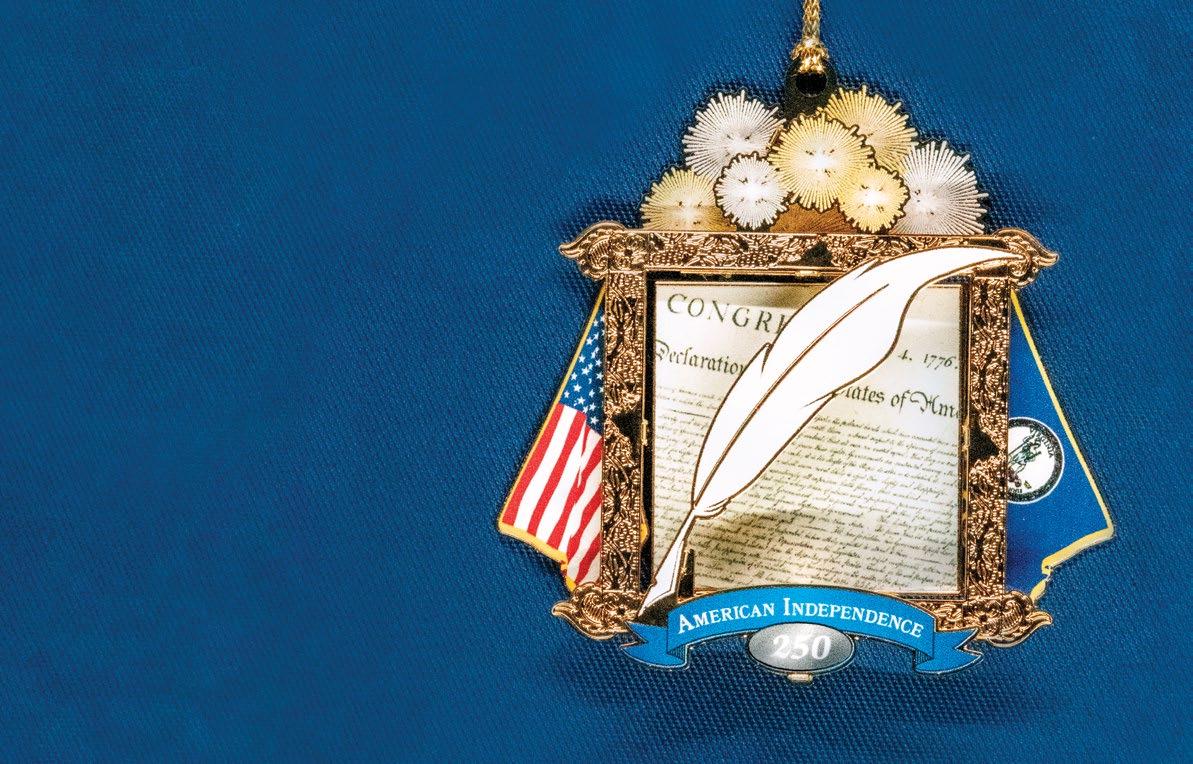
ShopVirginiaHistory.org